Things we like
- More nimble steering than its predecessor
Not so much
- Kerb weight works against its performance versus rivals
‘Doing more with less’ has a lot to be said for it.
We’re forever being exhorted to reject excess and to live a right-sized life. That original phrase was credited to American futurist Richard Buckminster Fuller and it’s something that’s front of mind when driving the latest Ford Mustang EcoBoost.
Mull over the spec sheet and this is an incredibly appealing proposition. For $66,990 you get a well equipped rear-drive coupe that generates more power and torque than Porsche’s four-cylinder coupe, the $133,365 718 Cayman. Almost immediately the spectre of the eight-cylinder Mustang GT materialises.
Wasn’t 60-odd grand the price we were paying for a V8 Mustang not so many years ago? Yes, it was. But now you’ll need to spend $78,990 for a manual GT coupe and $81,990 if you want one that, like the EcoBoost, comes with a 10-speed automatic.
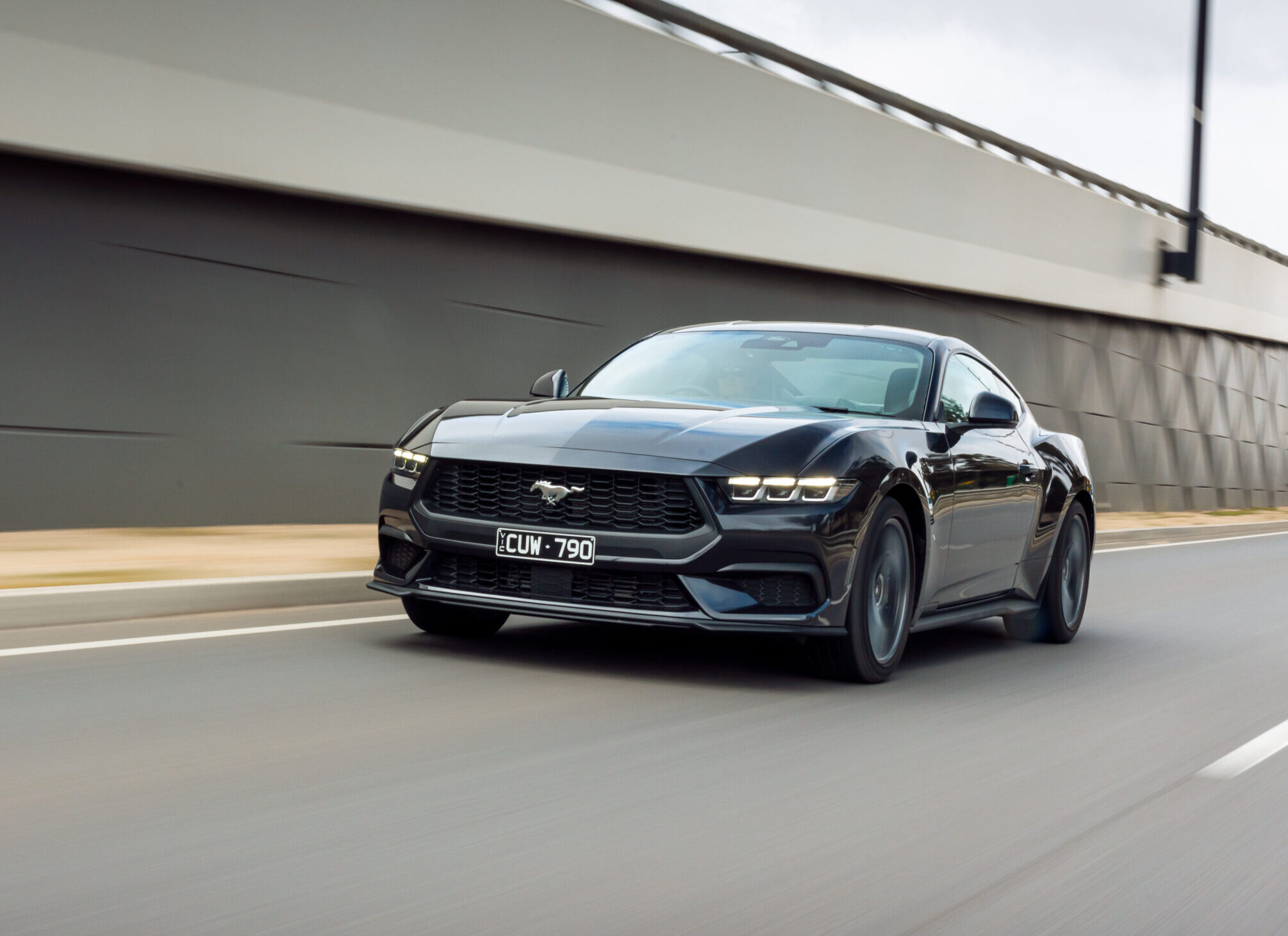
While the GT compares fairly closely on price to the likes of the Nissan Z and the Toyota Supra, it’s hard to know what to compare the EcoBoost with. It’s likely going to be a choice if you feel that you’re bored with hot hatches like the Golf R or the GR Corolla, two cars which it matches fairly closely on price.
It doesn’t take long behind the wheel of the Mustang EcoBoost to realise that it’d struggle to tag onto the back of either of those two all-wheel drive pocket rockets on any halfway challenging road. The 2.3-litre four is willing and, with 475Nm at its elbow, hardly shy of torque but the kerb weight of 1746kg contrives to take an edge off the car’s performance. A 0-100 sprint of 5.6 seconds is respectable and it even sounds reasonably good, even if some of the aural theatrics are artificial.
The engine benefits from a new twin-scroll turbocharger and both direct and multi-point injection, boosting response. The transmission slurs through ratios unobtrusively, when you’re hustling, helping to keep the car in its relatively narrow peak torque window. The old car made less in the way of twist action, but seemed to prolong the meaningful torque plateau further than this latest model. Still, that car made do with a mere 224kW whereas the current S650 model steps that up to 232kW.
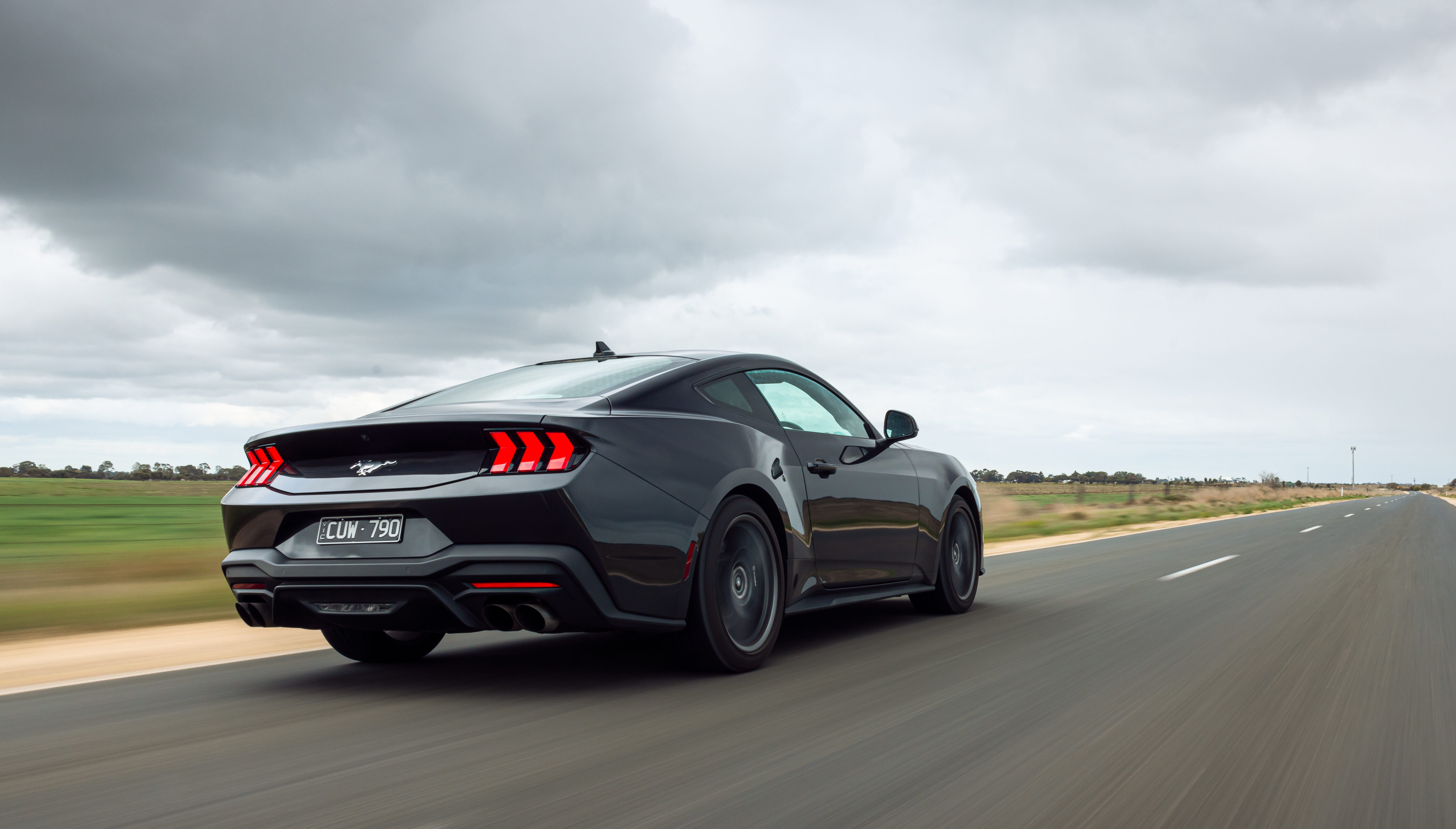
There’s a reasonable expectation that the front end would feel lighter and keener to turn in than the V8, and it does, but the difference is marginal. A fully-dressed turbo four can weigh close to a compact V8. Indeed were you to buy these powerplants as crate engines, Ford quotes 247.2kg for the EcoBoost without a flywheel and 268.5kg for the V8 with one. The standard Ecoboost flywheel assembly is 30kg. Make of that what you will.
The feeling of agility is likely down to the steering, which is night and day improved compared to the S550 predecessor, Ford having removed an anti-vibration joint from the steering column and increased the steering gearing and upgraded the rack capacity, resulting in a much nimbler feel. Damper tuning feels slicker, although the Pirelli P Zero tyre on this car (255/40 R19 all round) feels a step back from the Michelin Pilot Sport option.
Aussie cars also get the majority of the Performance Pack as standard including the brake package which comprises 390mm discs and six-piston Brembo front calipers with 355mm discs and four-pots aft. It also receives the 3.55:1 final drive, four-mode active exhaust, along with all the track apps: acceleration, brake and lap timer, line lock and the new drift brake. It’s a comprehensive package and in terms of standard gear, the V8 doesn’t get a whole lot extra.

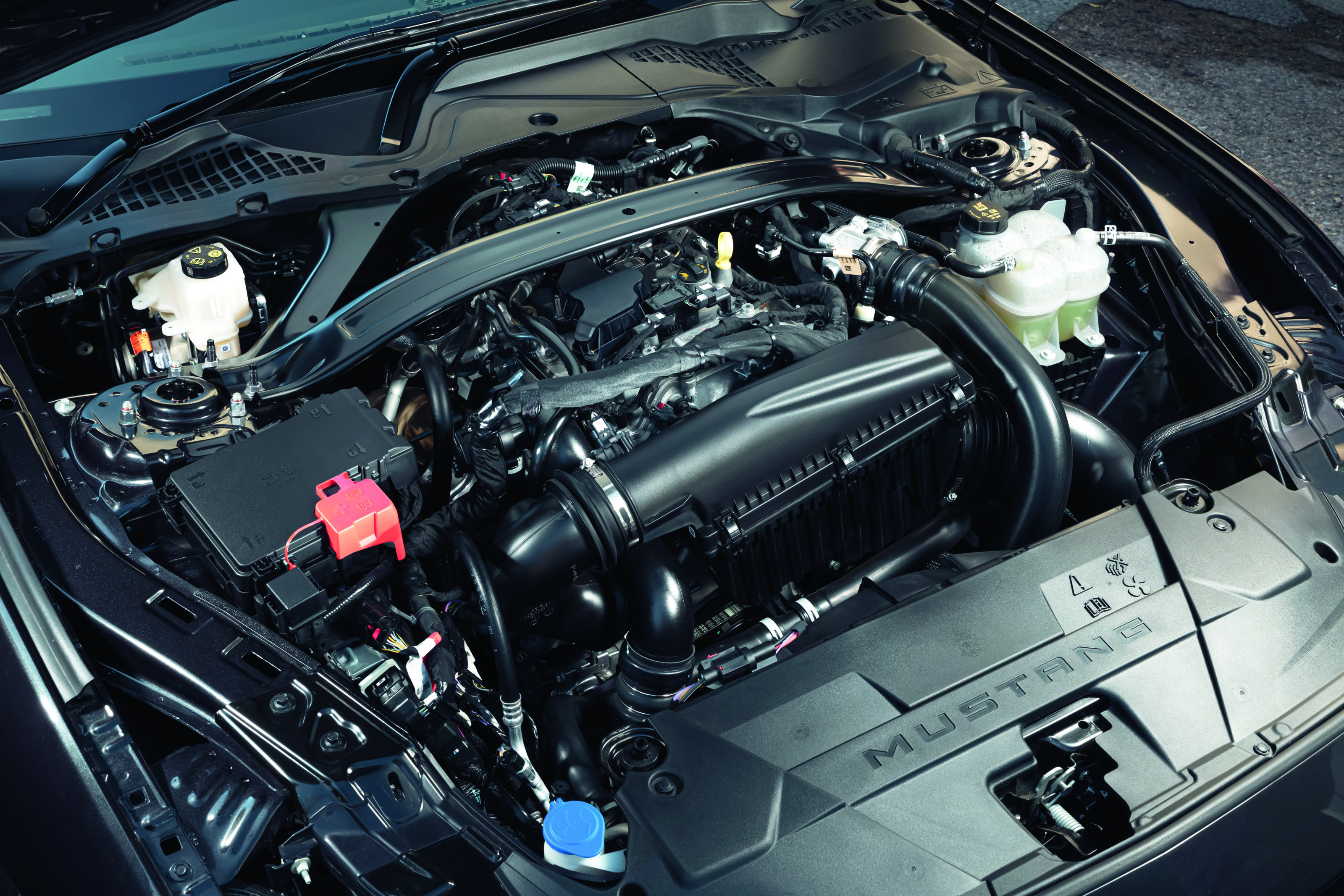
Should you buy one? Only if you’re not sold on the V8, a better car in most regards. You can do more with less, but when it comes to Mustangs, that really only applies to fuel economy. The S650 updates usefully improve the Mustang, but we can’t really make a coherent case for the EcoBoost as the thinking person’s option. It’s a good sports coupe, but it lacks the soul of the V8 and, among car enthusiasts at least, that counts.
Specifications
| Model | Ford Mustang EcoBoost coupe |
|---|---|
| Engine | 2261cc 4cyl, dohc, 16v, turbo |
| Max power | 232kW @ 5500rpm |
| Max torque | 475Nm @ 3000rpm |
| Transmission | 10-speed auto |
| Economy | 9.4L/100km |
| 0-100km/h | 5.6sec |
| Price | $66,990 |
| On sale | Now |
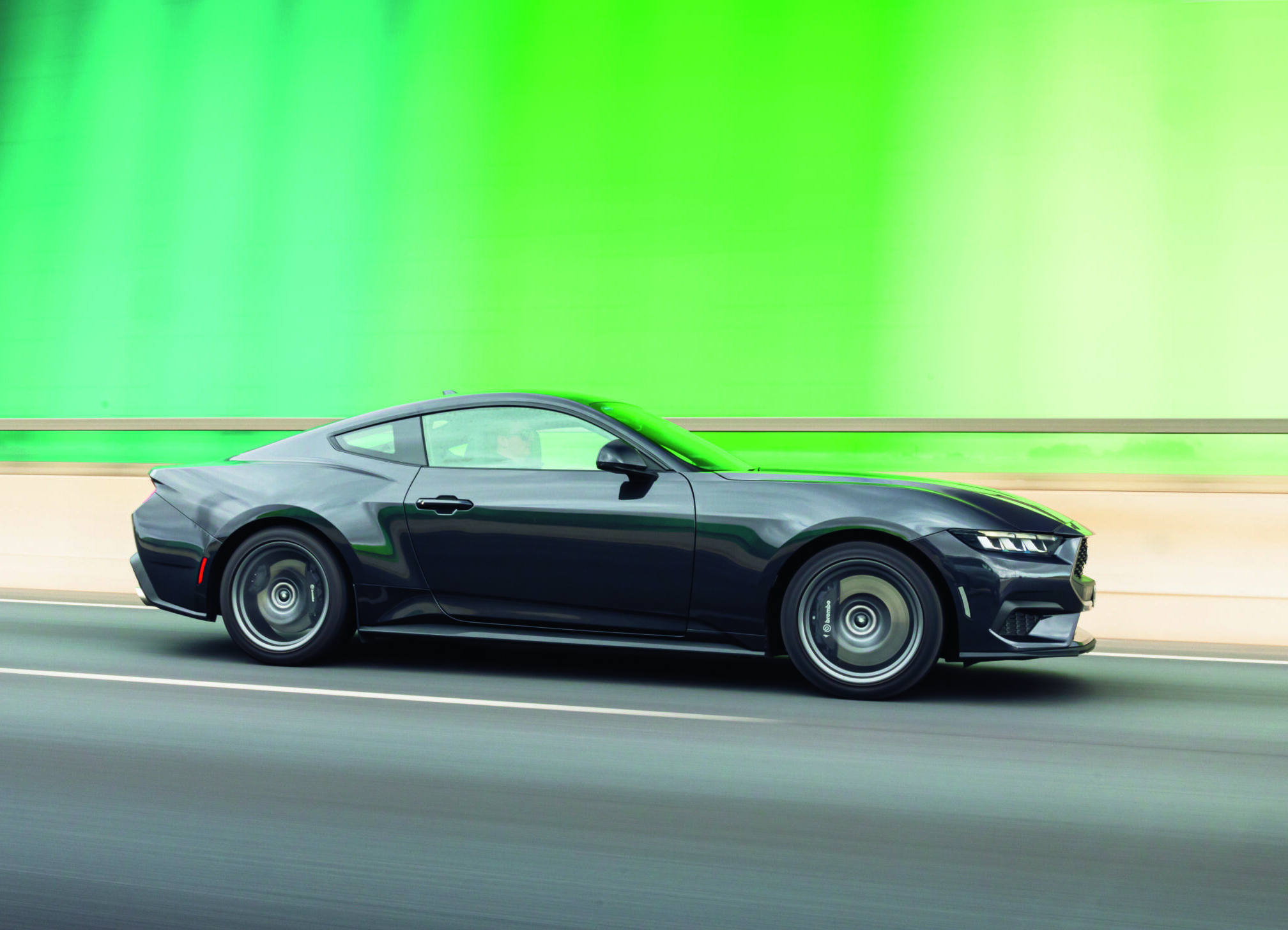
This article first appeared in the April 2025 issue of Wheels magazine.
With the 2025 Easter period coming just days before ANZAC Day on April 25, many Australians are planning an extended break, prompting authorities to issuing warnings about the roads to try and prevent holiday tragedies.
According to Yahoo!, new data has found that more than a quarter of Australians plan to take off the three working days between Easter Monday and ANZAC Day – April 21 to 25 – and almost two thirds of that group plan on travelling, including 77 per cent choosing to drive.
Combined with the recent drop in interest rates, that means a significant boost in domestic tourism, particularly in areas such as south-east Queensland and northern NSW as they continue to recover from Cyclone Alfred.
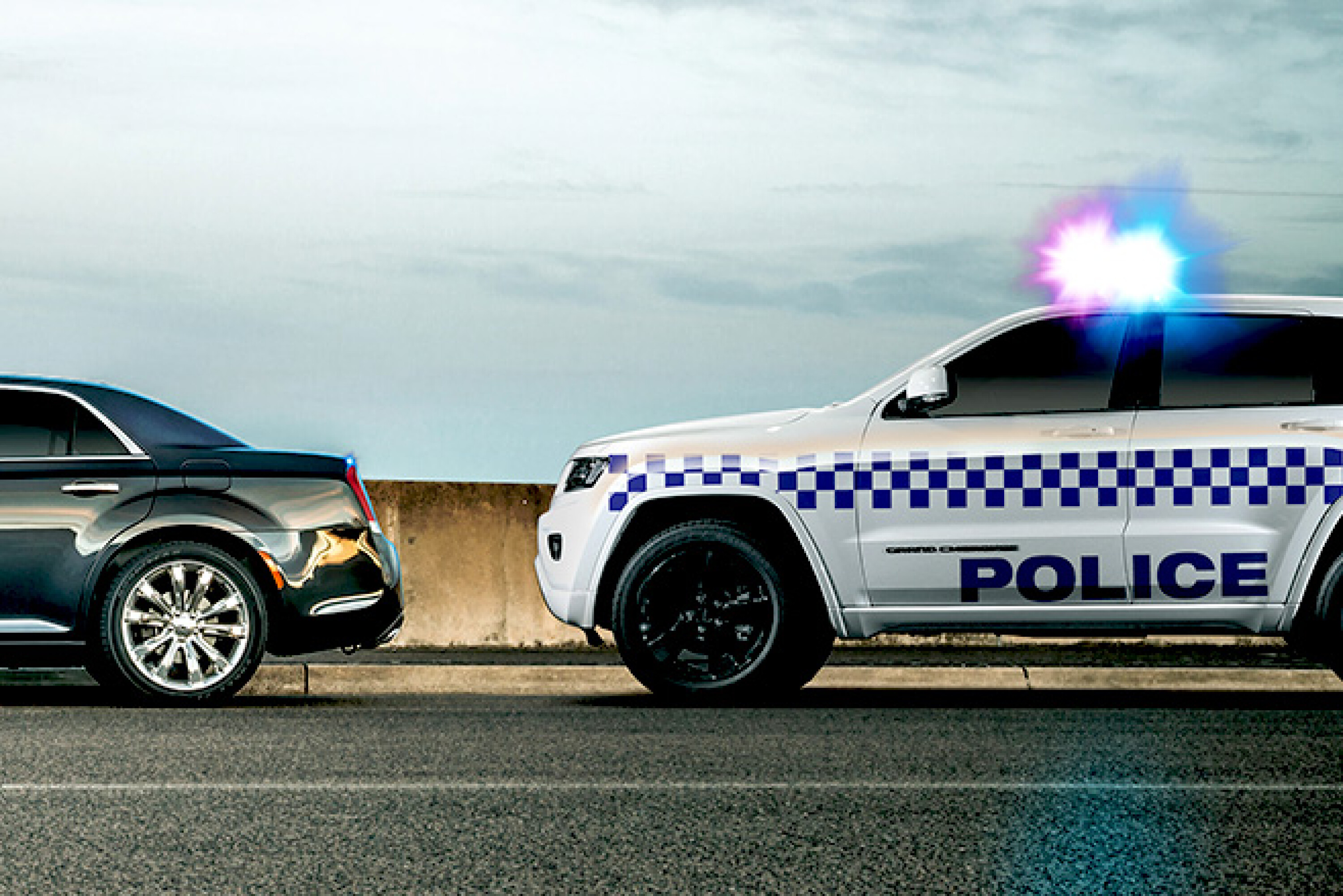
The NRMA’s Peter Khoury warns that with so many people planning a getaway, drivers must take extra precautions to cater for the drastic increase in vehicles on the road.
“We’re expecting traffic to ramp up as we get closer to Easter, particularly as the rest of the states fall into their school holiday period,” he said. “The road toll is up in a number of states, certainly in NSW, which is very worrying. We want to see that reverse, and this is going to be a critical period in the next few weeks, as more families go on holidays.”
In the 12 months to the end of February 2025, Australia’s national road toll sits at 1,292 deaths – an increase of 1.6 per cent compared with the same period in 2024.
Double demerits will be in force in NSW, the ACT and Western Australia from April 17 to April 21. Queensland police will also be broadening its roadside breath and drug testing as part of ‘Operation X-Ray Easter’, coinciding with the April school holidays from April 4t to 21.
So far this year, Queensland Police have conducted more than 500,000 random breath tests and more than 14,000 roadside drug tests, detecting more than 9500 motorists over the legal alcohol limit and almost 3000 positive indications that motorist have driven under the influence of illicit drugs. According to Queensland Police, X-Ray Easter will expand that significantly.
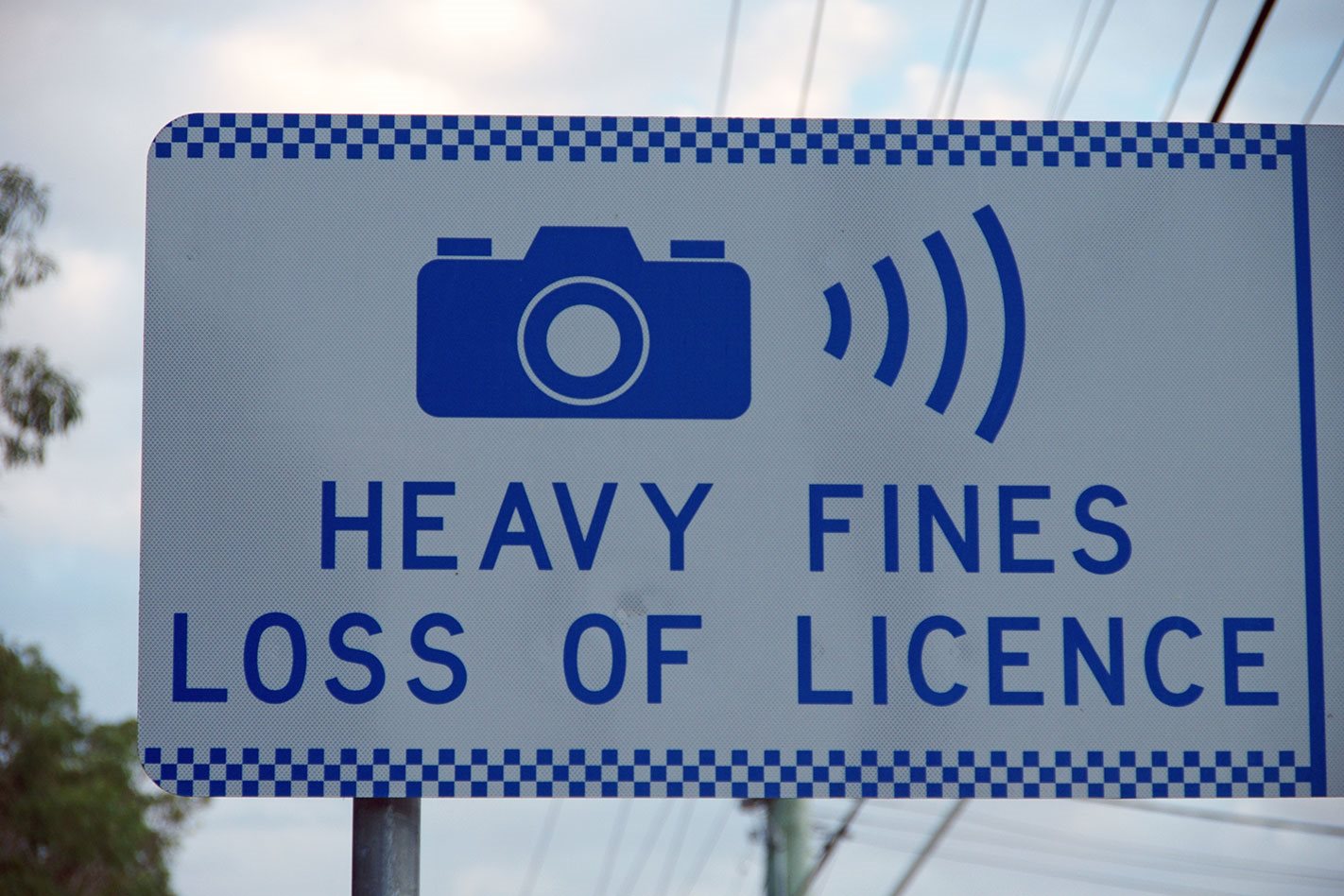
Queensland Police Road Policing and Regional Support Command Acting Chief Superintendent Garrath Channells said police will have a strong presence across the state, ensuring that drivers make safe choices.
“Easter is a time for families and friends to create lasting memories. We do not want to see anyone’s holiday period end in tragedy,” Acting Chief Superintendent Channells said. “History tells us Easter is a particularly dangerous time on our roads, with families travelling longer distances, often on unfamiliar routes.
Queensland Police are also urging motorists to avoid the “fatal five” – that’s drink and drug driving, speeding, fatigue, distraction, and seatbelt misuse –– to prevent holiday tragedies from occurring.
Easter holiday penalties – state by state
| NSW | Double demerits: Thurs Apr 17-Mon Apr 21 |
|---|---|
| ACT | Double demerits: Thurs Apr 17-Mon Apr 21 |
| Queensland | No specific double demerit window, but year-round enforcement targets repeat high-risk offences |
| Victoria | Victoria does not have a double demerit points scheme at any time of the year, including public holidays and long weekends |
| Western Australia | Double demerits: Thurs Apr 17-Mon Apr 21 |
| Tasmania | Tasmania does not have a double demerit points scheme at any time of the year, including public holidays and long weekends |
| South Australia | South Australia does not have a double demerit points scheme at any time of the year, including public holidays and long weekends |
| Northern Territory | Northern Territory does not have a double demerit points scheme at any time of the year, including public holidays and long weekends |
The plug is being pulled on the electric car.
European manufacturers are scaling back their EV ambitions in response to a collapsing market. In Germany, EV sales plunged 27.4 percent in 2024. Porsche, Lotus, Volvo, Bentley, Audi, Aston Martin have each announced some sort of delay to their EV plans and even renewed investment in combustion engines and hybridisation. Geopolitical tectonic plates are also starting to shift against the EV.
While it’s still early days, a rollback of the EV rollout could amount to an apparent win for Western auto industries, a win for the combustion engine (which I personally love, just as you do) and a loss for China, where the EV continues to boom.
But it would feel like another loss of other sorts – and a great pity, if you ask me. I like electric cars. They make increasing sense to my prudent, middle-aged Australian mind. I like driving them.

I don’t love the extra weight, but that’s probably unsurprising given I swap into a 900kg Toyota at least once a week. But EVs are getting lighter; a rear-drive Tesla Model 3 is ‘just’ 1761kg with a sensible 513km WLTP range. The low centre of gravity in such cars makes the heft feel somehow less. EVs should get lighter with time.
You can hoon around in an EV without having to wait for an engine to warm up. I like their stealthy briskness, letting you zip around urban areas at night without feeling like the bloke who just woke up some other bloke’s baby.
EVs are great for daily duties. Cabin pre-heating or pre-cooling is a game-changer. You can also leave your dog in the car on a hot day with the AC going and doors locked.
EVs are cheap to run. Forget the $1500 wallbox – if you’re the average Australian who commutes 31.2km each day, a powerpoint is fine. Program the car to charge between midnight and 6am on an EV electricity plan, and you could cover about 75km for $1 in something like a Hyundai Ioniq 5 RWD. A 7L/100km new SUV at $1.93/litre is more like $10 for the same distance. Charge the EV at work on the boss’s dime and you’re laughing.
More EVs will lead to a proliferation of used EV batteries – a disaster, right? More like an ideal scenario for Australia which increasingly has more household solar than it knows what to do with. Already enterprises are repurposing old EV batteries for household use. No electricity bill at all, and not a single lump of coal burned? Sounds okay to me.

Many expensive-sounding studies have demonstrated that EVs are far from from “zero emission” but even in worst-case scenarios, they still release less CO2 than combustion cars. The International Energy Agency says a medium EV, when fully recharged with 90 percent coal-fired electricity across a 15-year lifetime, will produce 16 percent less overall CO2 than an equivalent combustion car – including manufacturing. That includes the assumption that no new renewables are added to the grid in that time.
Even if charged only with coal, EVs shift their exhaust fumes to some distant power station, rather than within easy inhalation distance of, you know, your lungs. And if you don’t ‘believe’ in man-made climate change, what if you’re wrong? Surely there’s no harm in releasing considerably less CO2 into the atmosphere just in case?
I accept EVs aren’t perfect. Using children to mine the cobalt, in Africa, is not ideal, to say the least. If you live rural, need to tow or regularly drive long distances, a PHEV is better.
Depreciation, however, remains the hairiest number on my EV spreadsheet, but that will surely improve in time. If the lights don’t go out, that is. It would be a true shame if they did.
This piece originally appeared in the March 2025 issue of Wheels magazine.
Rapidly expanding brand BYD has confirmed earlier rumours it would make a significant change to its product warranty for Australian customers, expanding its six-year/150,000km coverage from bumper-to-bumper and adding an 8-year/160,000 km battery warranty.
The new arrangement will apply to all models and is backdated to cover vehicles from BYD’s first Australian deliveries in August 2022.
Previously the brand’s six-year warranty excluded certain parts, with elements such as the infotainment touchscreen and shock absorbers covered only for three years or 60,000km (whichever comes first). Other parts such as lights, suspension and ball joints are covered were covered for four years or 100,000km.

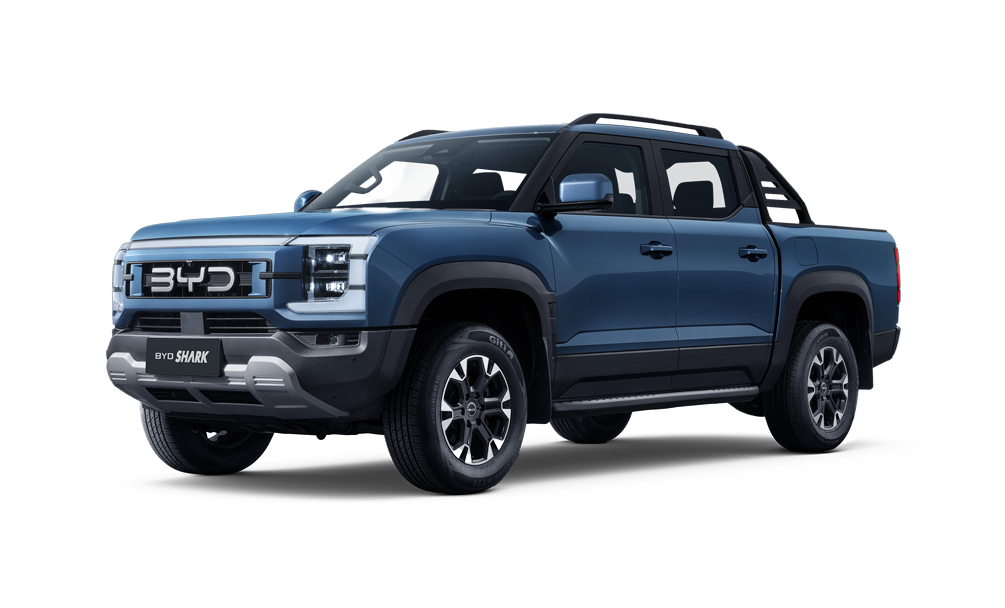
BYD made the announcement as it said it had marked over 40,000 sales in Australia.
The warranty includes the Power Battery pack and Drive Unit which are covered for a period of eight years or 160,000 km, whichever occurs first, while all other components are subject to a six-year / 150,000km warranty.
BYD also announced its SEALION 7, its electric SUV launched here in February, had achieved a five-star ANCAP, joining the much-hyped BYD SHARK 6.
Further information about BYD’s enhanced warranty can be found here.
Smart has revealed the new #5 Brabus, which will sit atop the brand’s lineup as a very quick version of its new mid-size SUV. Capable of a 3.8-second 0-100km/h sprint using launch control, the #5 Brabus makes a massive 475kW of power – or a full 165kW more than the next #5 below it.
That’s again thanks to a dual-motor all-wheel drive drivetrain, which is fed by a large 100kWh battery that enables a 540km WLTP range – or 200km less than the regular #5 thanks to the extra performance.
Thanks to its 800-volt architecture, the #5 Brabus can charge at up to 400kW for a 10 to 80 per cent charge in as little as 18 minutes.
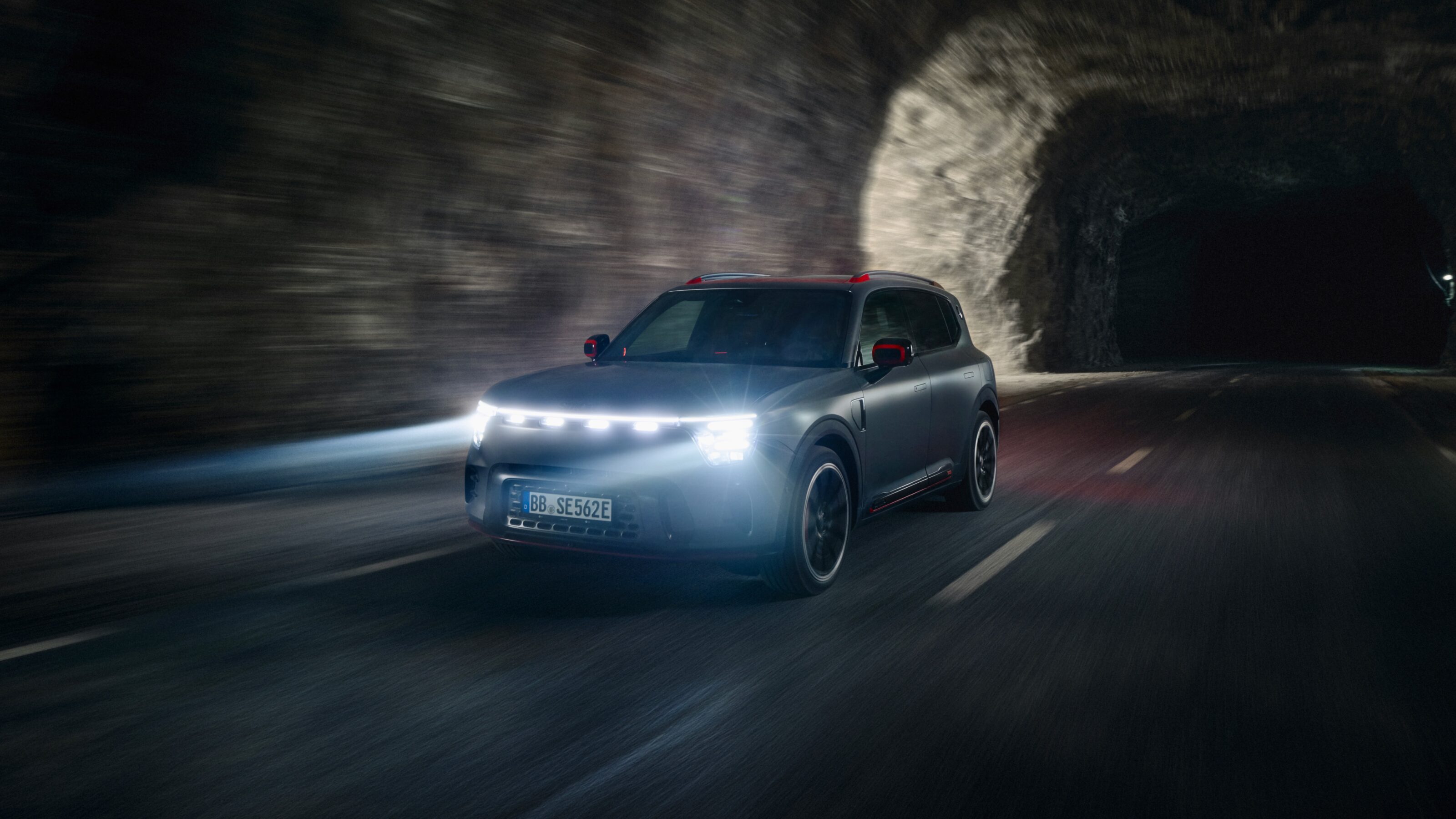
On the exterior of the #5 Brabus are new 21-inch ‘Monoblock Z’ wheels, sportier styling pieces and red colouring on the brake callipers, mirror caps, side skirt and rear trim strip.
On the inside, the #5 Brabus features the same sporty details as the #1 and #3 Brabus such as suede and microfibre upholstery, heated and ventilated front sports seats and red stitching, while the suede steering wheel also sports illuminated Brabus badging.
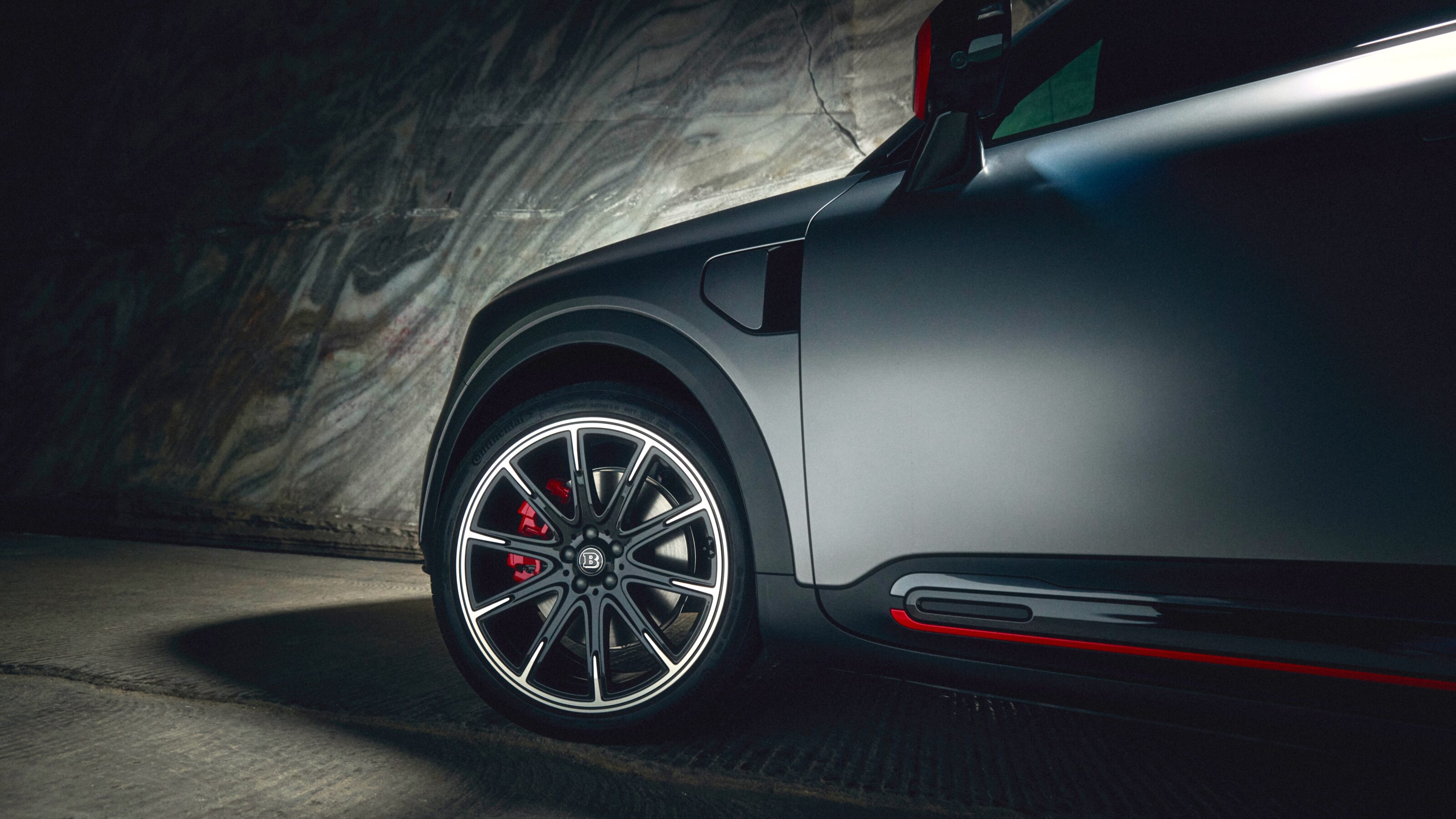

The #5’s infotainment is handled by two 13-inch OLED displays with one dedicated to the front
passenger, while a 20-speaker Sennheiser sound system provides 2,000 watts of audio. 256-colour LED ambient lighting also features.
European pricing for the #5 Brabus starts at €60,900 (A$108,105) and deliveries there will commence later in the year.
Currently, the Smart #5 Brabus is yet to be confirmed for Australia, though the regular #5 will go on sale locally in late 2025.
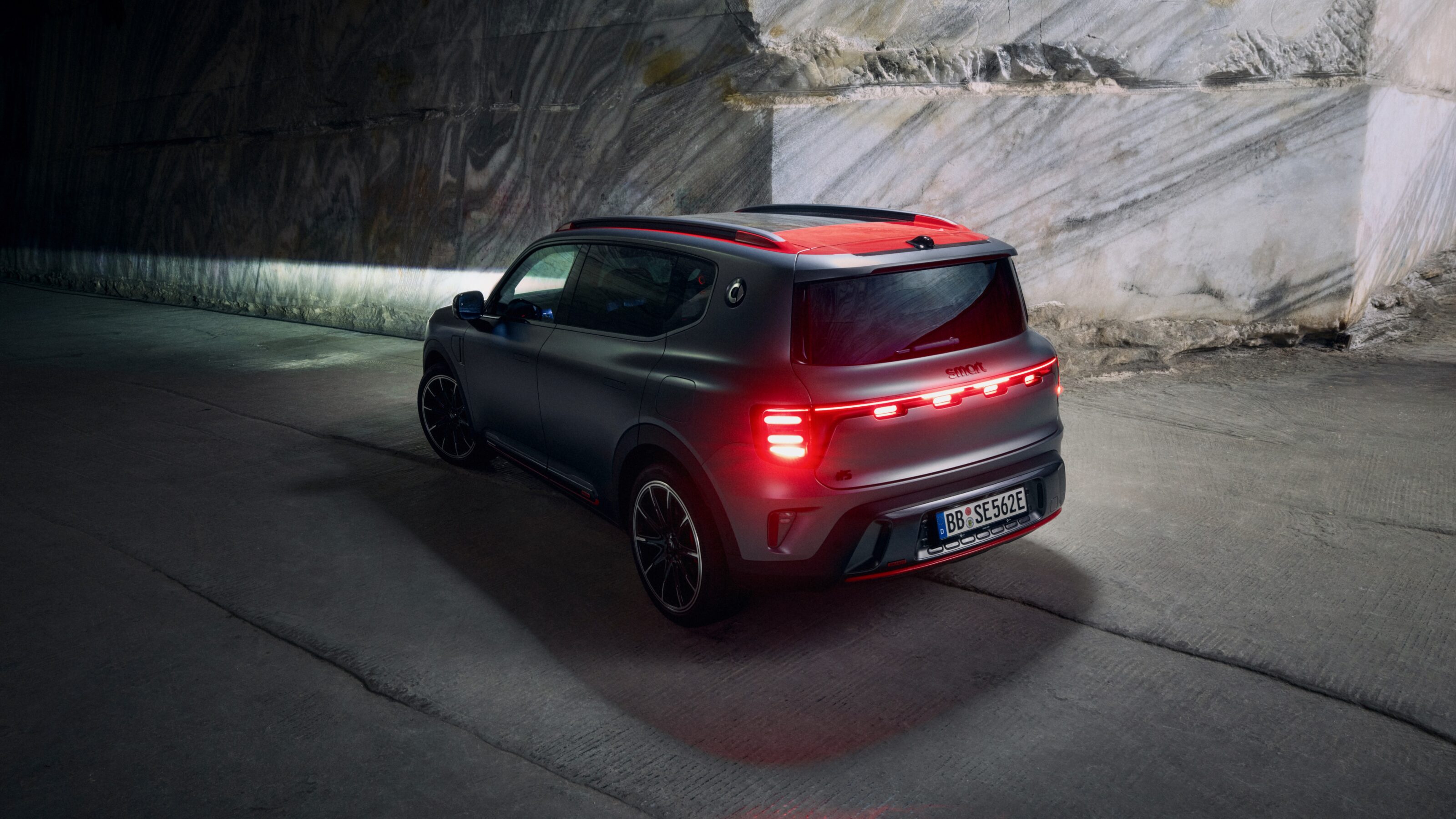
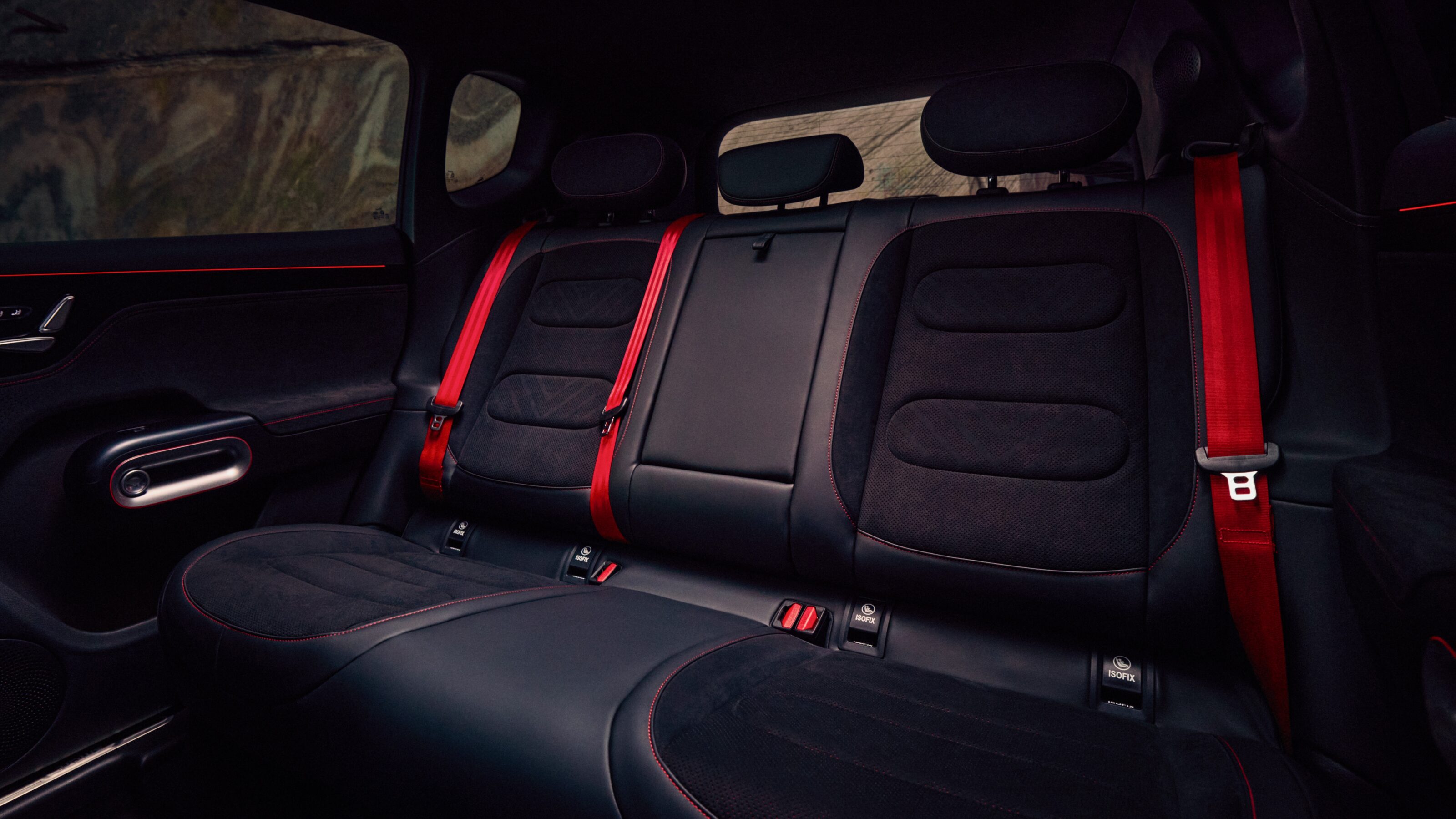
Only a few months after launching the CLE 53 in coupe form, Mercedes-Benz Australia has
announced local pricing and specifications for the CLE 53 Cabriolet, which is now available to order.
Priced from $175,600 plus on-road costs – or $16,700 more than the 53 coupe and $38,000 more
than the four-cylinder CLE 300 convertible – the AMG CLE 53 Cabriolet uses the same
turbocharged six-cylinder engine and 48V mild-hybrid drivetrain as the coupe.
Making 330kW of power and up to 600Nm of torque on overboost, the CLE 53 Cabriolet hits
100km/h in just 4.2 seconds – only 0.2 seconds slower than the lighter coupe. Power is sent to all
four wheels through a nine-speed automatic transmission.
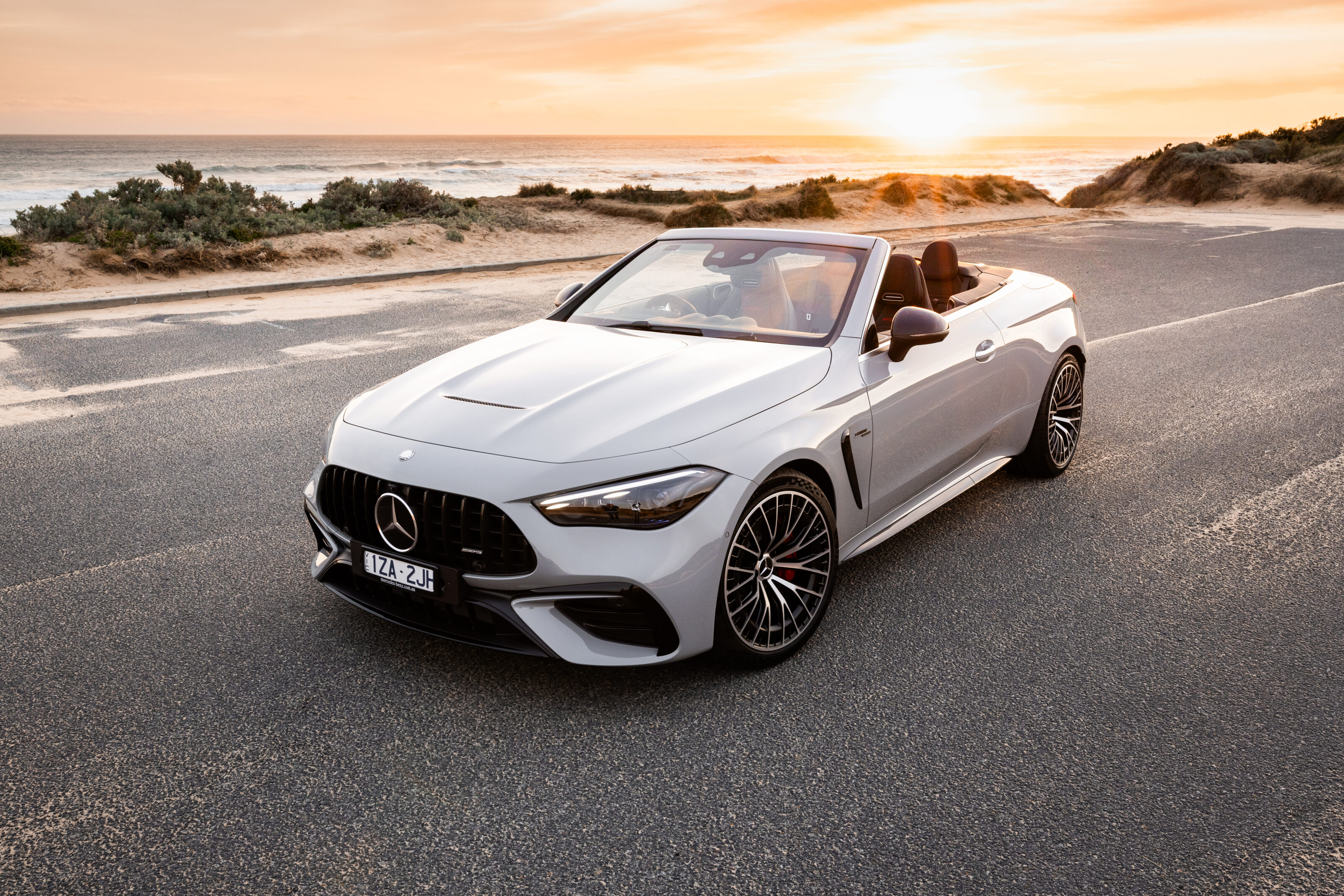
Standard equipment on the CLE 53 includes 20-inch alloy wheels, automatic all-LED exterior
lighting, adaptive damping, rear-axle steering, the AMG Exterior Night Package 1 and 2, keyless
entry and start, and the company’s ‘Aircap’ electric wind deflector and the ‘Airscarf’ neck-level
heating and ventilation.
Inside features black leather upholstery with red stitching, carbon interior trim, a Nappa leather
steering wheel, 64-colour ambient lighting, a 12.3-inch digital driver’s display, an 11.9-inch
touchscreen with wireless Apple CarPlay and Android Auto, digital radio and a Burmester sound
system.
Safety equipment includes 10 airbags, autonomous emergency braking with pedestrian and cyclist
detection, adaptive cruise control with stop and go functionality, blind-spot monitoring with front and
rear cross-traffic alert, active speed limit assist, safe exit warning, lane keeping assistance,
adaptive lane guidance, traffic sign recognition, a 360-degree camera, front and rear parking
sensors and adaptive high beam.
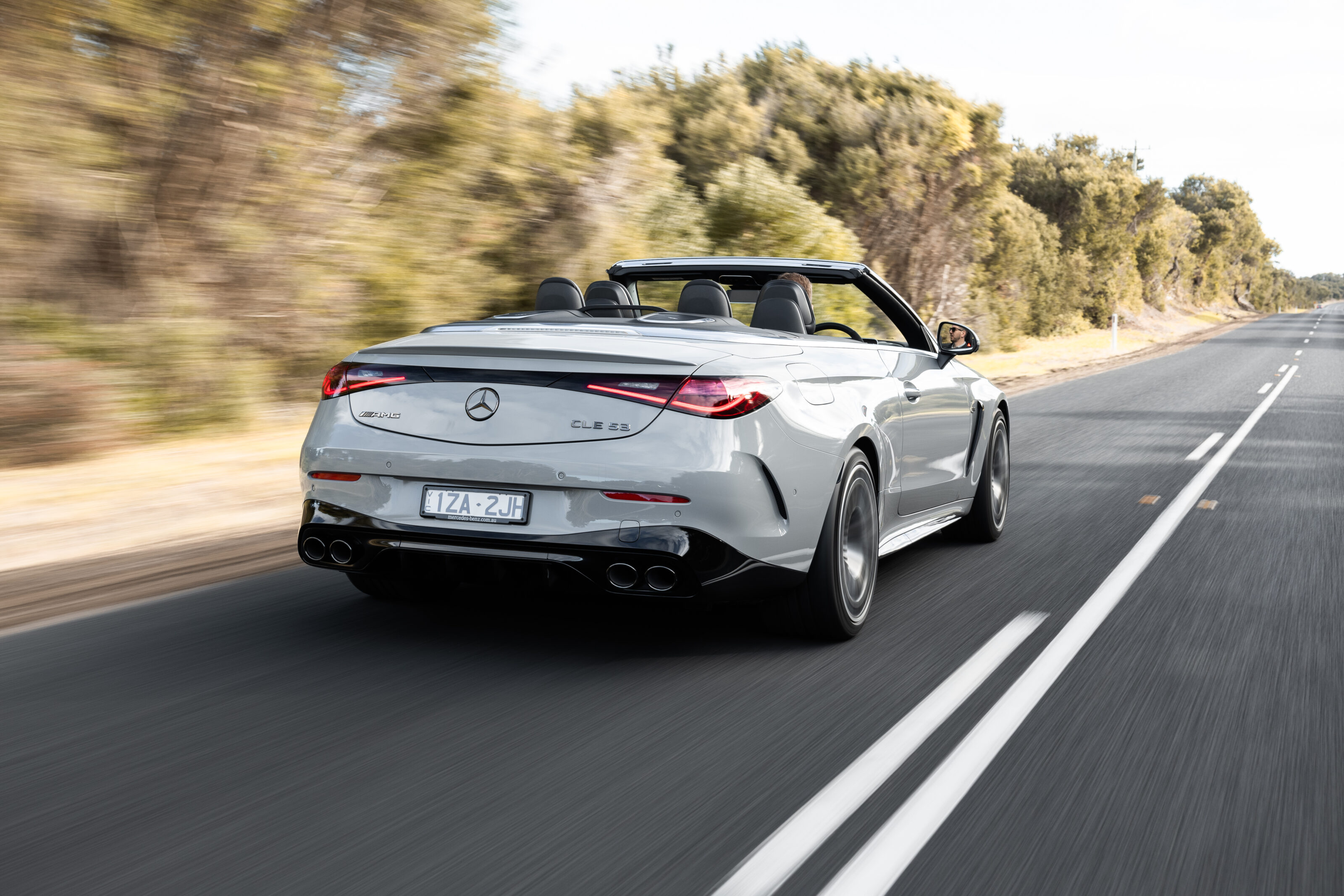
Buyers wanting to personalise their CLE 53 Cabriolet can choose the $2,100 Plus Package with
heated and ventilated front seats, memory parking assistance, air-balance package and the
energising package plus.
The $8,900 Carbon Package is also available and includes carbon fibre trim on the steering wheel,
dashboard and doors, front splitter, mirror caps, lip spoiler and side sills.
AMG Performance Seats are also available for an extra $5,400.
Mercedes-AMG CLE 53 pricing (plus on-road costs):
| Coupe | $158,900 |
|---|---|
| Cabriolet | $175,600 |
The Mercedes-AMG CLE 53 is now available to order, with local deliveries commencing soon.
Things we like
- Excellent fuel economy from the e-POWER system
Not so much
- Price makes the hybrid tech less accessible than it should be
I’m not sure I’m ready for the idea of a $54,365 Nissan Qashqai.
Yes, this is the flagship N-Design version of the updated 2025 car, and it features the clever e-POWER hybrid engine, but that’s some serious wedge to fork over for what remains a compact crossover.
The headline news is that the car has been thoroughly refreshed inside and out, with a new trim structure across the range, better tech inside the vehicle and those perennial complaints about servicing costs have also been addressed. Plus there’s that new industry-leading 10-year warranty that is sure to attract many buyers who realise what effect that will have on their new Nissan’s residual values a bit further down the track.
First impressions? There’s a lot going on with the styling. Normally that’s no good thing, a case of designers over-egging the pudding, but it seems to work here. Whether it’s the busy design of the 20-inch (yes, really) wheels, the scaly grille or the revised front and rear lights, it gives a fresh look to a model introduced as recently as 2022. The car’s stance is purposeful and there’s a muscular shoulder line which gives it an impression of extreme rake.
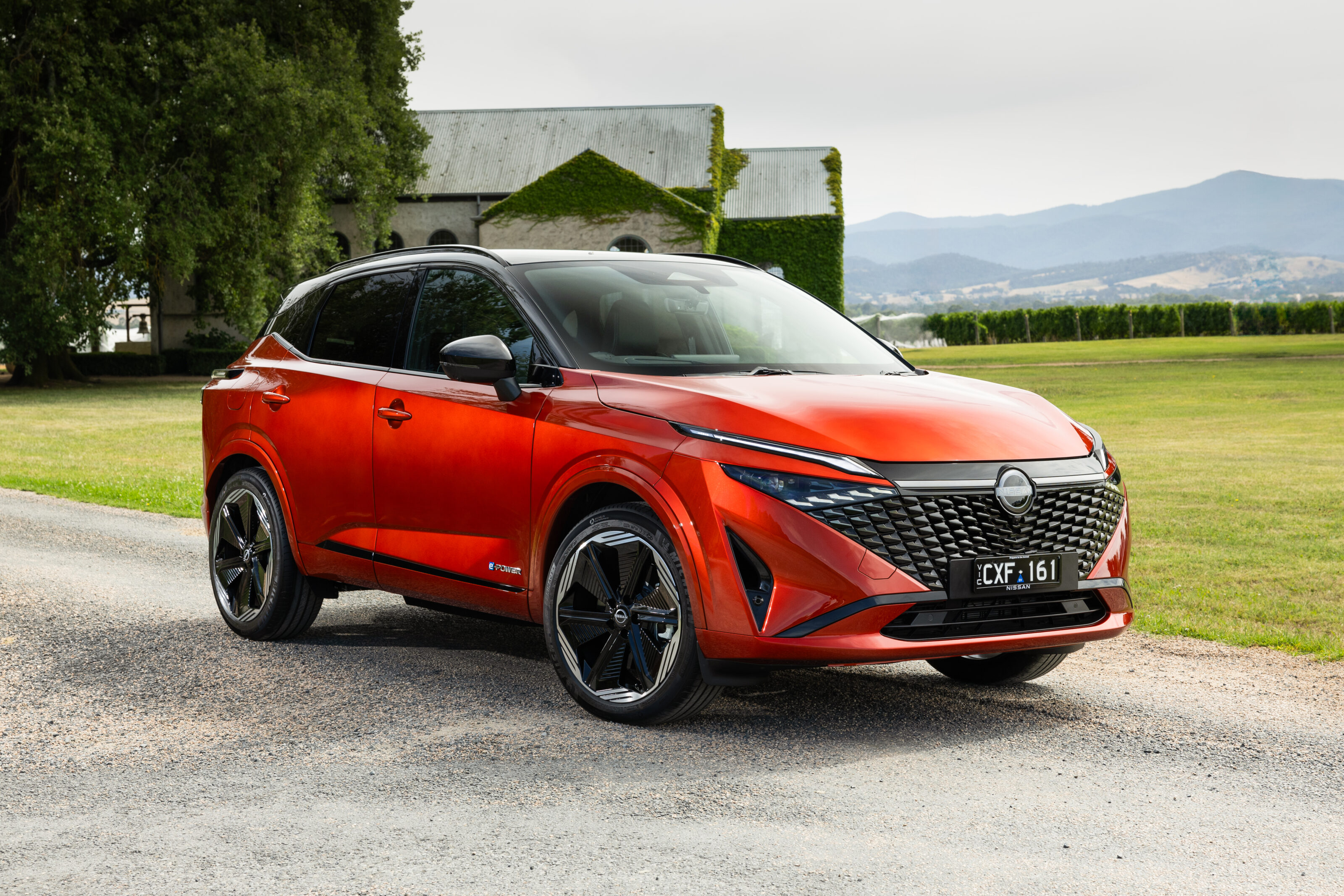
The quality of the materials inside has improved, with the N-Design being liberally swathed in Alcantara and leather. There’s also quite a bit of piano black plastic which looks great until it becomes smudged and scratched. It’s time car manufacturers looked for a more durable alternative. A 12.3-inch centre screen features wireless Apple CarPlay and Android Auto, and there’s also the backup of native sat-nav should your phone go on the fritz. The tile-based interface isn’t the most intuitive, but it seems robust.
The steering wheel is particularly slick, with a soft stitched leather wrap. The seats are embossed and feature white piping and stitching, and there’s a wireless phone charger, which is a bit of a tight squeeze for larger handsets.
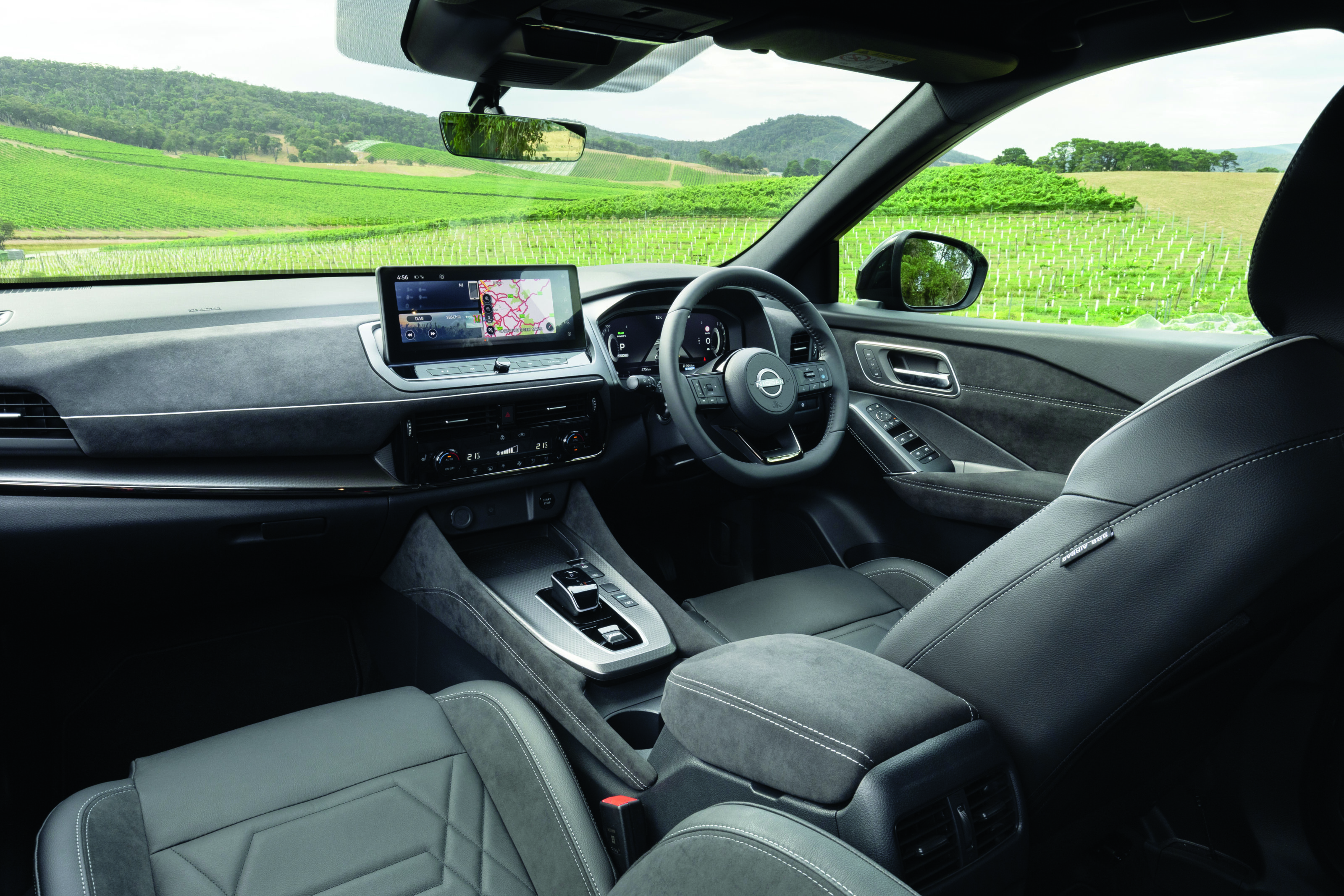
The hybrid system is such that the 1.5-litre petrol engine powers an e-motor that drives the front wheels. Mechanical refinement is extremely good, to the extent that you notice tyre noise which would usually be muted by the sound of the engine. The brake pedal handover from friction to re-gen braking is also very slickly handled, but I feel that, in this variant at least, the ride quality is writing cheques that the handling can’t cash. That’s in part due to the big alloy wheels and the 235/45 R20 Michelin Primacy4 tyres, which let you know unambiguously exactly how coarse the chip is that you’re driving on.
One area where we’ve had mixed feelings about Nissan’s e-POWER system insofar as it sounds odd (the revs don’t always build and decay in tune with acceleration and deceleration) is that the efficiency figures have typically failed to match up to the likes of Toyota and Honda hybrids. The former point still stands, but on a mixed route of country back roads, freeways and suburban routes, I averaged 4.6L/100km which is right up there with the best in class.
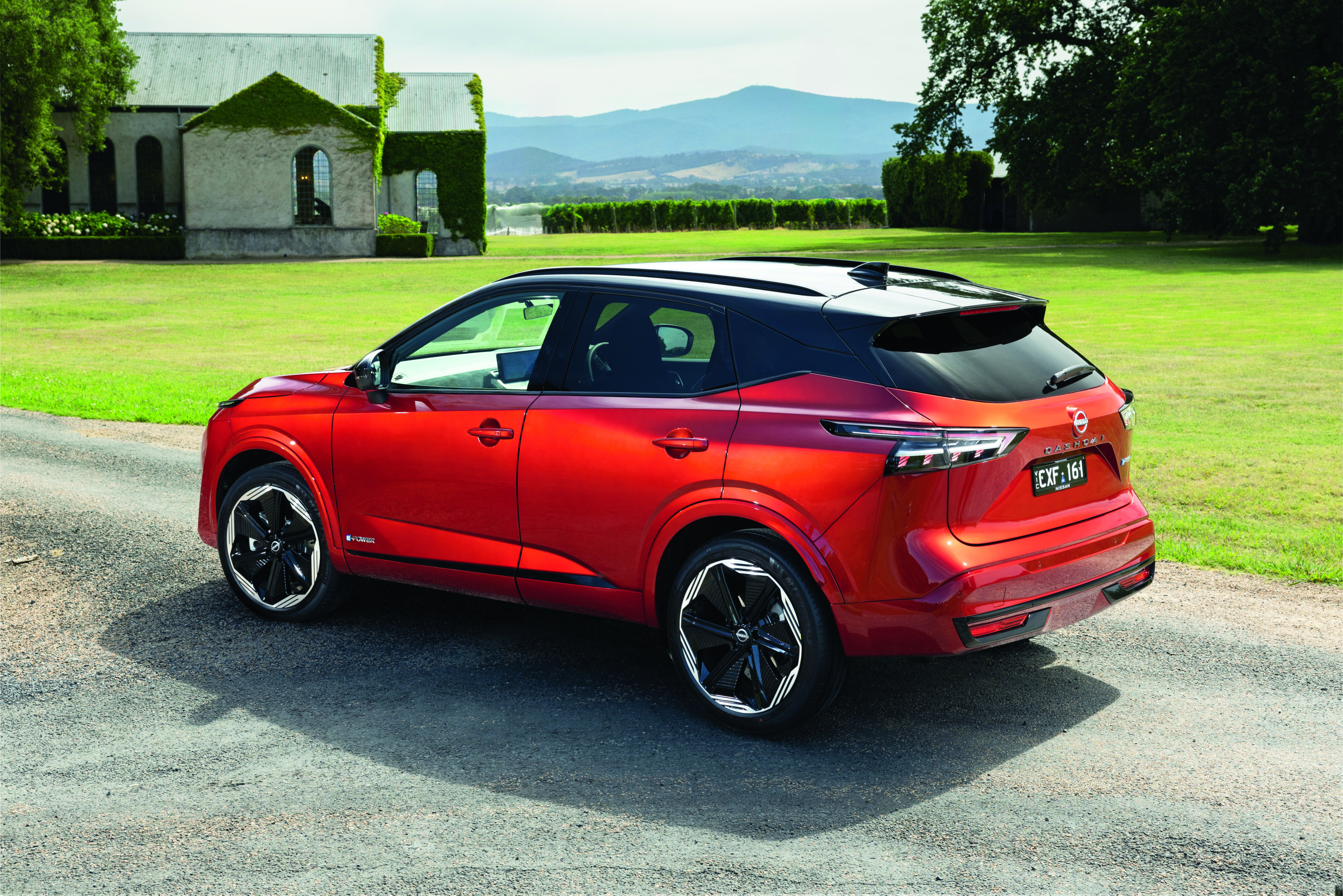
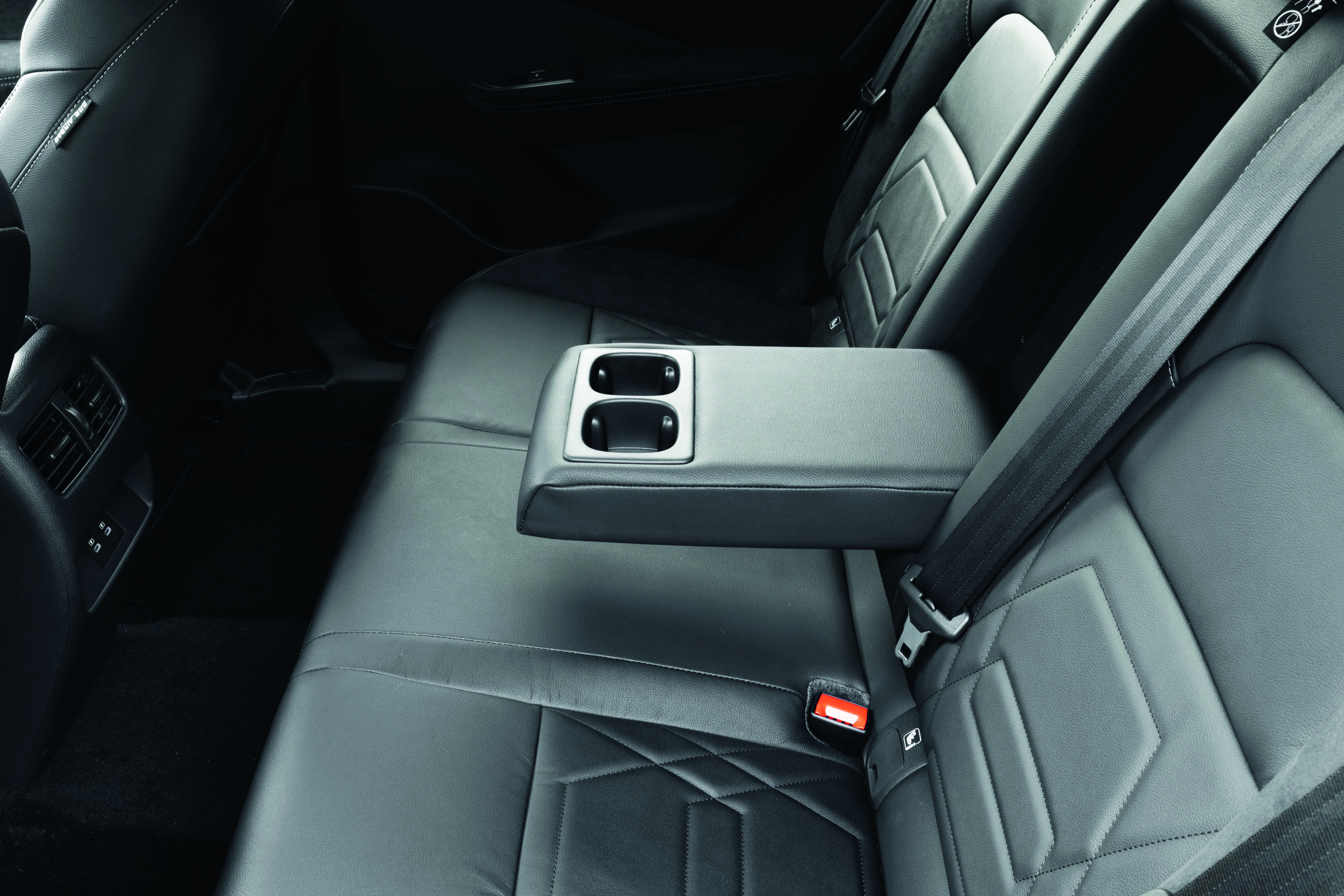
As a demonstrator of what the updated Qashqai is all about, the N-Design impresses, although I’d be inclined to look at the other end of the range in search of value. The entry-level Qashqai ST runs on 17-inch alloy wheels for a more supple ride and starts at just $32,665. It seems a more convincing proposition, despite the fact that it misses out on the e-POWER hybrid tech. You’ll need to step up to the $52,365 Ti-L e-POWER model for that, which, given that Toyota will happily sell you a hybrid RAV4 for just over $42k, seems a bit of a miss.
The updates have made a good compact crossover more attractive still, but until Nissan prices its hybrid tech a bit more generously, it can’t hope to erode the market share of its key rivals in any meaningful manner. That seems a genuine shame.
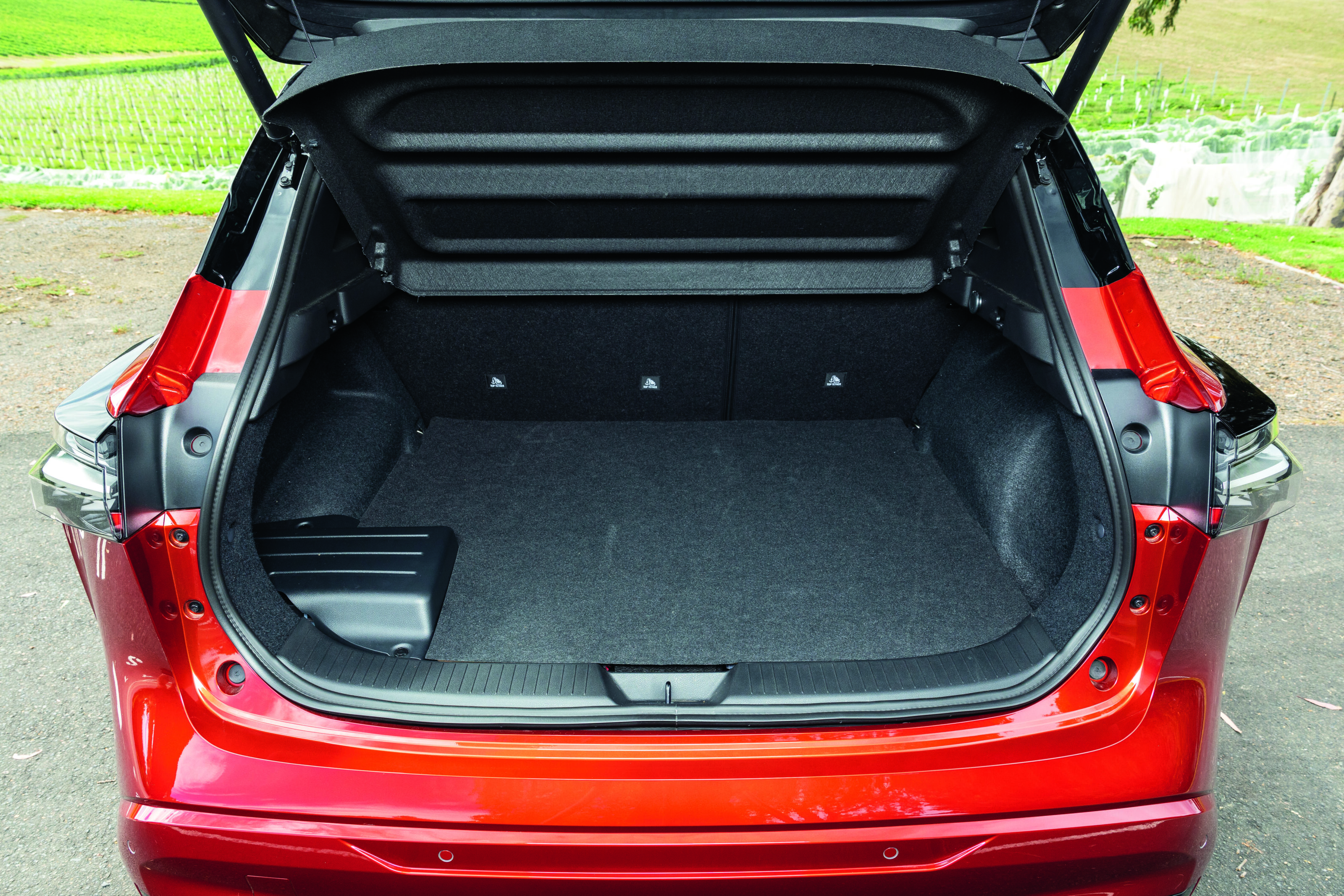
Specifications
| Model | Nissan Qashqai N-DESIGN e-POWER |
| Engine | 1497cc 3cyl, dohc, 12v turbo hybrid |
| Max power | 140kW @ 4500-7500rpm |
| Max torque | 330Nm @ 0-3000rpm |
| 4.6L/100km (tested) | 4.6L/100km (tested) |
| Weight | 1728kg |
| 0-100km/h | 7.9 sec (tested) |
| Price | $54,365 |
| On sale | Now |
This article appeared in the April issue of Wheels magazine.
Upstart brand Polestar has notched a 12 per cent increase in Australian sales for the first quarter of 2025 versus the corresponding quarter last year, despite the market for EVs softening.
The Electric Vehicle Council sales data backs up international sales data from the Swedish brand (owned by Volvo and Chinese company Geely), which showed a 76 per cent increase in international sales in Q1 2025 compared with Q1 2024, or an estimated volume of 12,304 cars.
Polestar said sales are supported by “a growing uptake of newer models and the ongoing transition to an active selling model”.

“We are on the right track and doing the right things,” said Michael Lohscheller, Polestar CEO, said. “I’m pleased with the progress we are making in transforming our commercial operations. With a more active selling model, more retail partners and attractive cars, we are delivering results. At the same time, we are monitoring closely and assessing the volatile geopolitical environment and will adapt as needed.”
“We’re very pleased to see that our new model line-up is resonating with Australians following the introduction of two SUVs,” said Scott Maynard, Head of Polestar Australia.

“We’ve grown our retail footprint by 50 per cent on last year to make Polestar more accessible to our customers, which has transformed our retail operations. Our retail partners are doing a remarkable job for the brand and we’re looking forward to new, purpose-built retail spaces coming online in the next quarter.”
Polestar expects to publish its full-year results for 2024 by the end of April 2025.
We’re steeped in Nissan Skyline GT-R history here in Australia. It’s almost as if the history of Godzilla is somehow passed down by osmosis through generations of car enthusiasts. It’s part of the fabric of Bathurst, and all Aussie petrolheads will be able to hold forth on the exploits of Mark Skaife and Jim Richards behind the wheel of the all-conquering GT-R, and be able to quote the ‘pack of arseholes’ speech verbatim. It’s simply a rite of passage.
Most will also appreciate quite how many hoops Nissan had to jump through in order to officially import the R32 GT-R and that for all of its illustrious reputation, Nissan couldn’t find 100 takers for it. Nissan Australia’s chief Ivan Deveson instead claimed, with some justification, that it wasn’t about sales numbers. It was a brand-building exercise to capitalise on the success of the race cars.
In fact, the work required to get the cars to comply with Australian Design Rules was extensive, but conducted on a shoestring $250K budget. A new transmission oil cooler was required, the muffler and windscreen, instrument panel, rear lights, and side intrusion bars required changing, and the speed limiter was removed. But we’re getting sidetracked.

What the modest take-up of R32 GT-R did was to scupper any chances of its successor, the R33, coming to Australia in any official capacity. Nissan did crunch the numbers in 1993, and realised that with the ADR modifications being handled in-house in Japan, the landed price here would be somewhere in the region of $190K, some 75 percent more than the slow-selling R32 GT-R, and nudging on the price of a Porsche 964 Carrera 4. The figures just couldn’t be made to work and other markets were prioritised for R33 GT-R exports.
All of which explains why we see the R33 GT-R as the awkward middle child of the Godzilla triumvirate, and most of the rest of the world views it quite differently. To European markets, it’s the hero GT-R, much of that attributable to one very smart piece of marketing. Back in 1996, the company proudly trumpeted the fact that the Skyline R33 GT-R had claimed the production car record around Germany’s fabled Nürburgring Nordschleife. Right under Porsche’s nose, the Japanese had hired hotshoe Dirk Schoysman to pedal a GT-R around the Green Hell in 7m59s, making it the first production car to lap in under eight minutes. Or so Nissan claimed.
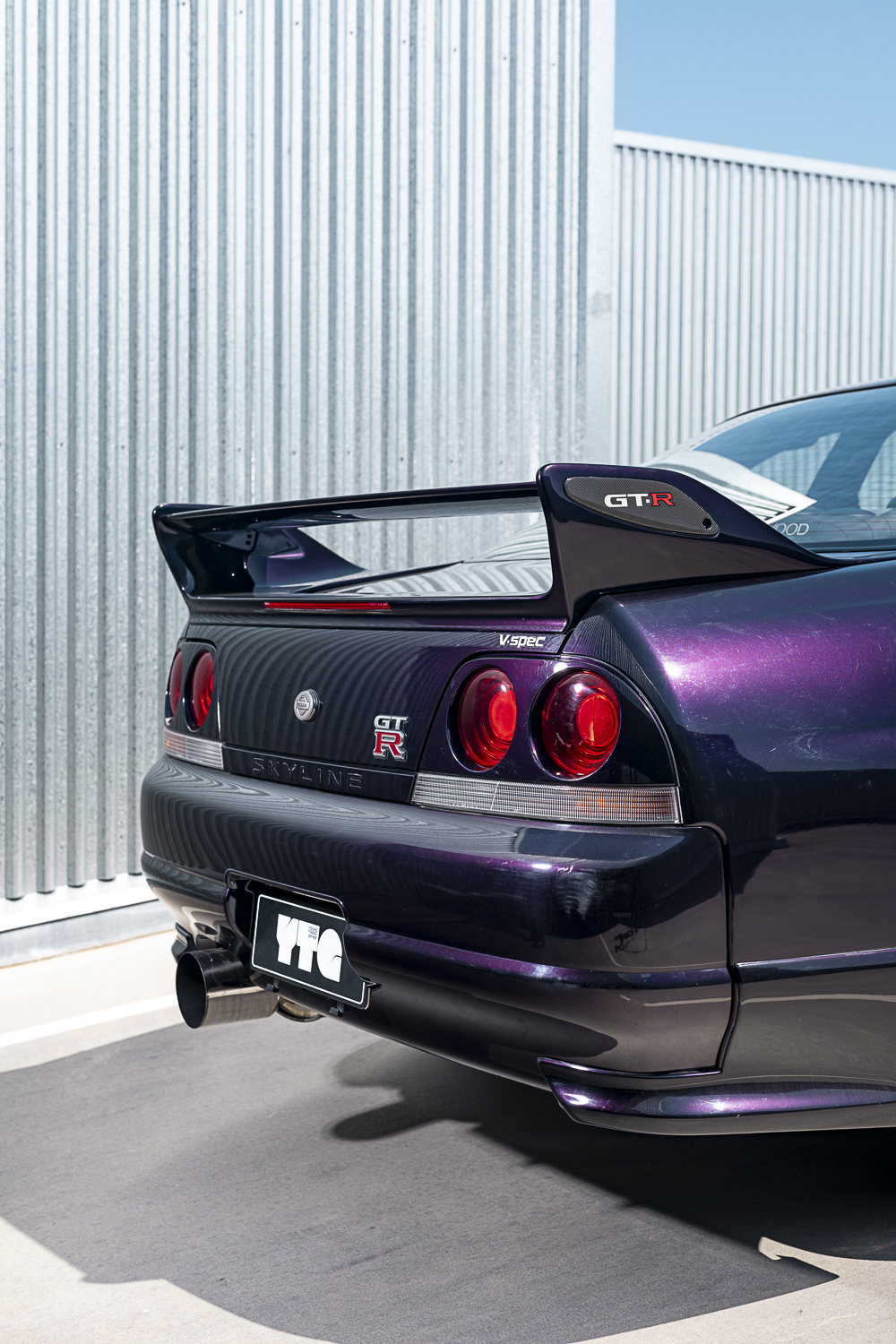
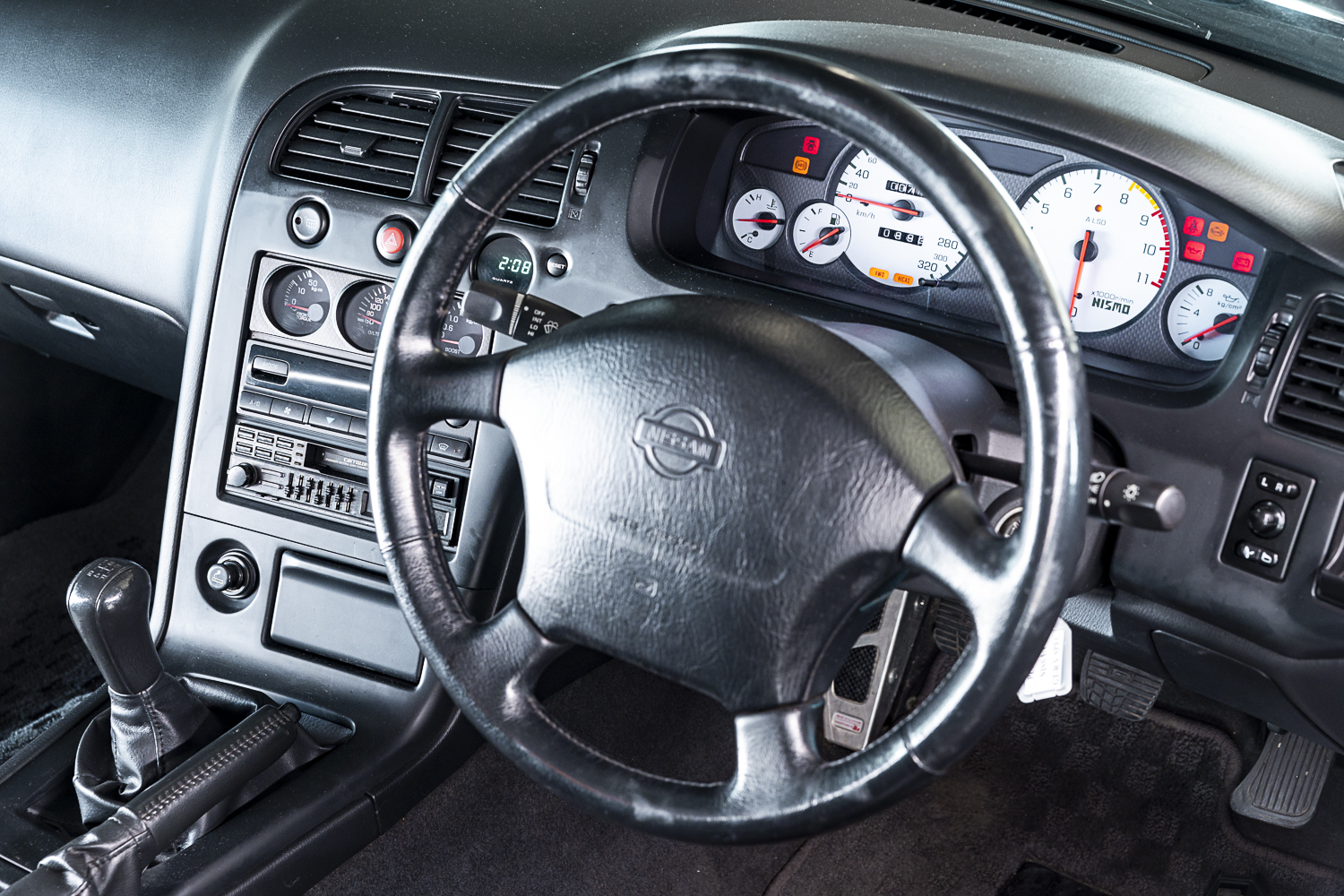
Now clearly there are a few issues with this claim. Nissan did not cheat, because it’s impossible to cheat when there are no rules. There’s no official lap time record around the Ring, merely self-reported times with no independent sanction. The car wasn’t inspected to be standard beforehand and even Schoysman will have a little chuckle when asked if the GT-R was the same as the ones that rolled off the lines. It even ignored the fact that Jaguar had registered a 7m46s time in an XJ220 back in 1991. It nevertheless set the media into a frenzy and kicked off a Nürburgring lap time arms race that continues to this day. When the folk at Jaguar heard what Nissan had done, they only belatedly realised quite what a promotional opportunity they’d squandered.
The 7:59 lap record car (chassis number 000055) is still owned by Nissan and is kept at its Zama heritage collection, sometimes appearing in the foyer at the HQ. A close look at that car shows the aluminium roll cage and what looks like a decidedly non-standard exhaust system. But then Nissan had a target to aim for. The previous year, Japanese title ‘Best Motoring’ had rocked up in Nürburg with an R33, gun driver Motoharu Kurosawa and some video equipment. They recorded an 8m01s time, which clearly set the cogs ticking at Nissan headquarters.
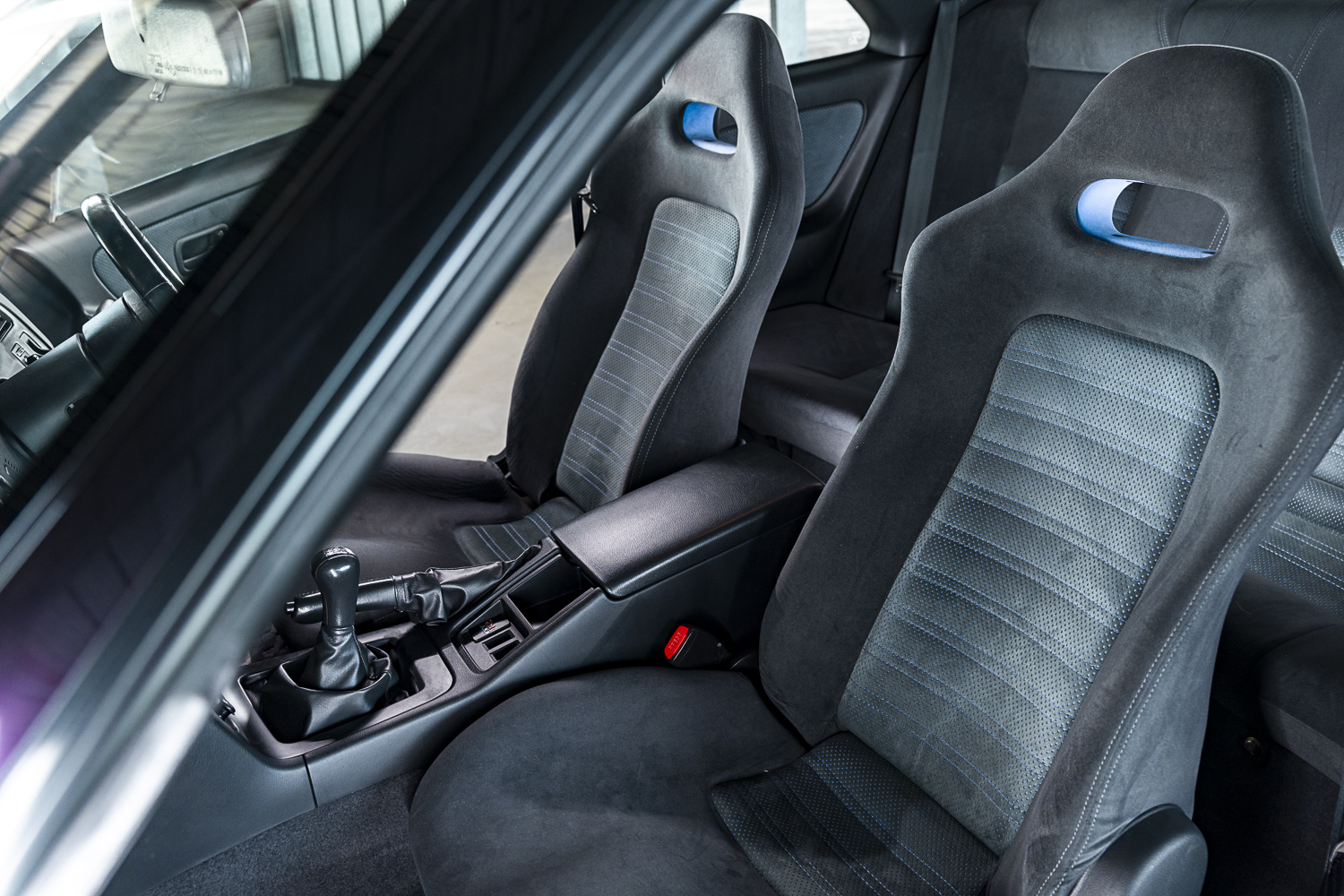
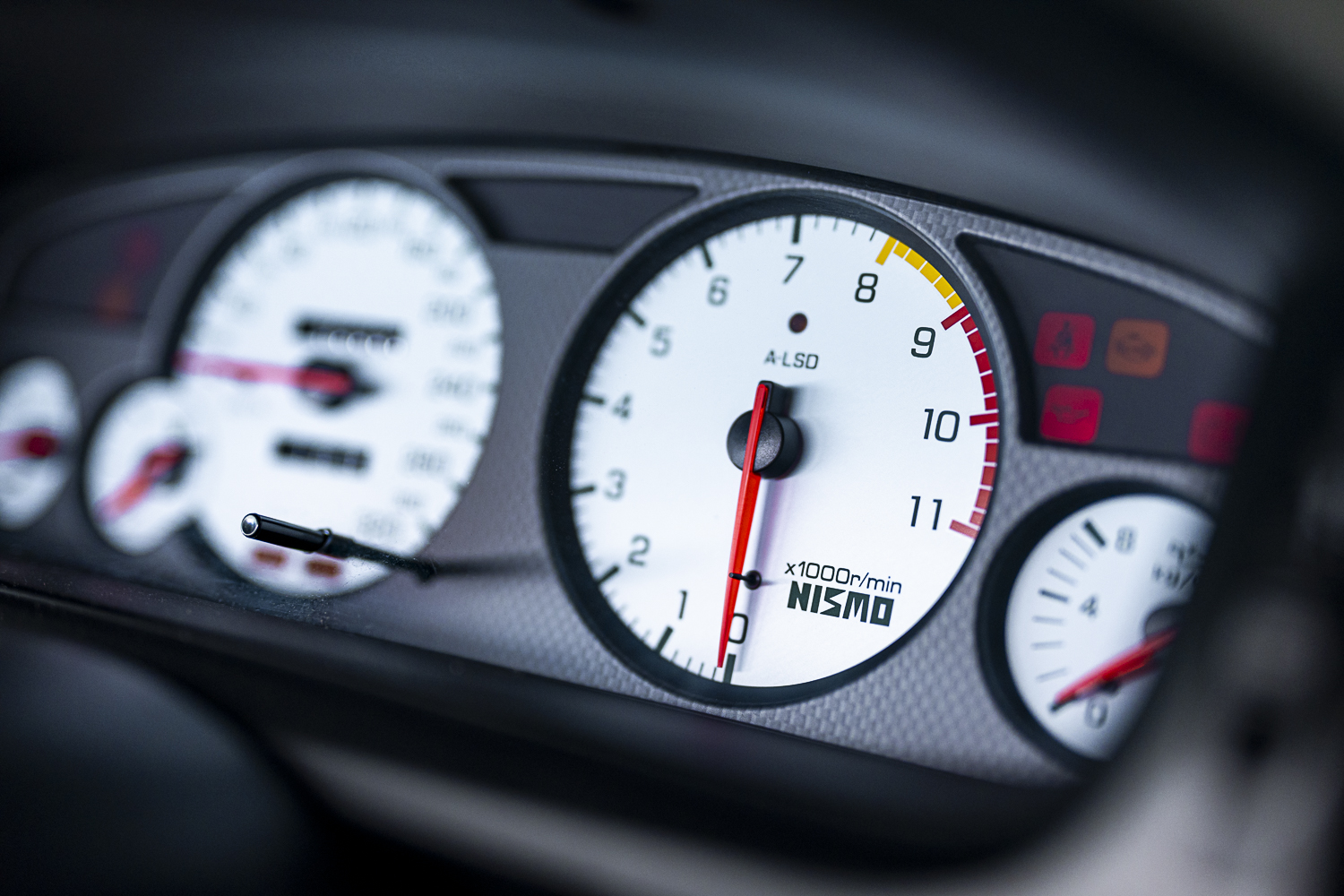
A friend gave me a copy of that VHS tape and I remember being utterly transfixed by it, watching it over and over until it became even snowier and fuzzier. Kurosawa’s level of commitment seemed utterly demented and the Skyline became this awe-inspiring thing, a monster that bent physics and made the supercar establishment look old and stupid. Little did I know that by the time I’d be writing this that Golf GTIs can lap quicker. It kicked off a personal and professional love affair with the Green Hell that lasted nearly 20 years and thousands of laps.
If the R33 Skyline GT-R was quick around the ‘Ring, it took its own sweet time getting there. First shown in October 1993 at the Tokyo Show, it would be another 15 months before production versions started rolling off the lines. To appreciate the R33 GT-R it pays to understand the conditions in which it was born. In 1991, between the R32 and the R33 Skylines being launched, Japan’s so-called bubble-economy collapsed.
This, and the subsequent interest-rate stagnation, were to have repercussions for years. Not only did it mean that savings had to be made with the R33, it even meant that its successor, the R34, never got the front-mid-engined layout and twin-turbo V6 that engineer Kazutoshi Mizuno and designer Kozo Watanabe had both planned for it. Shame.
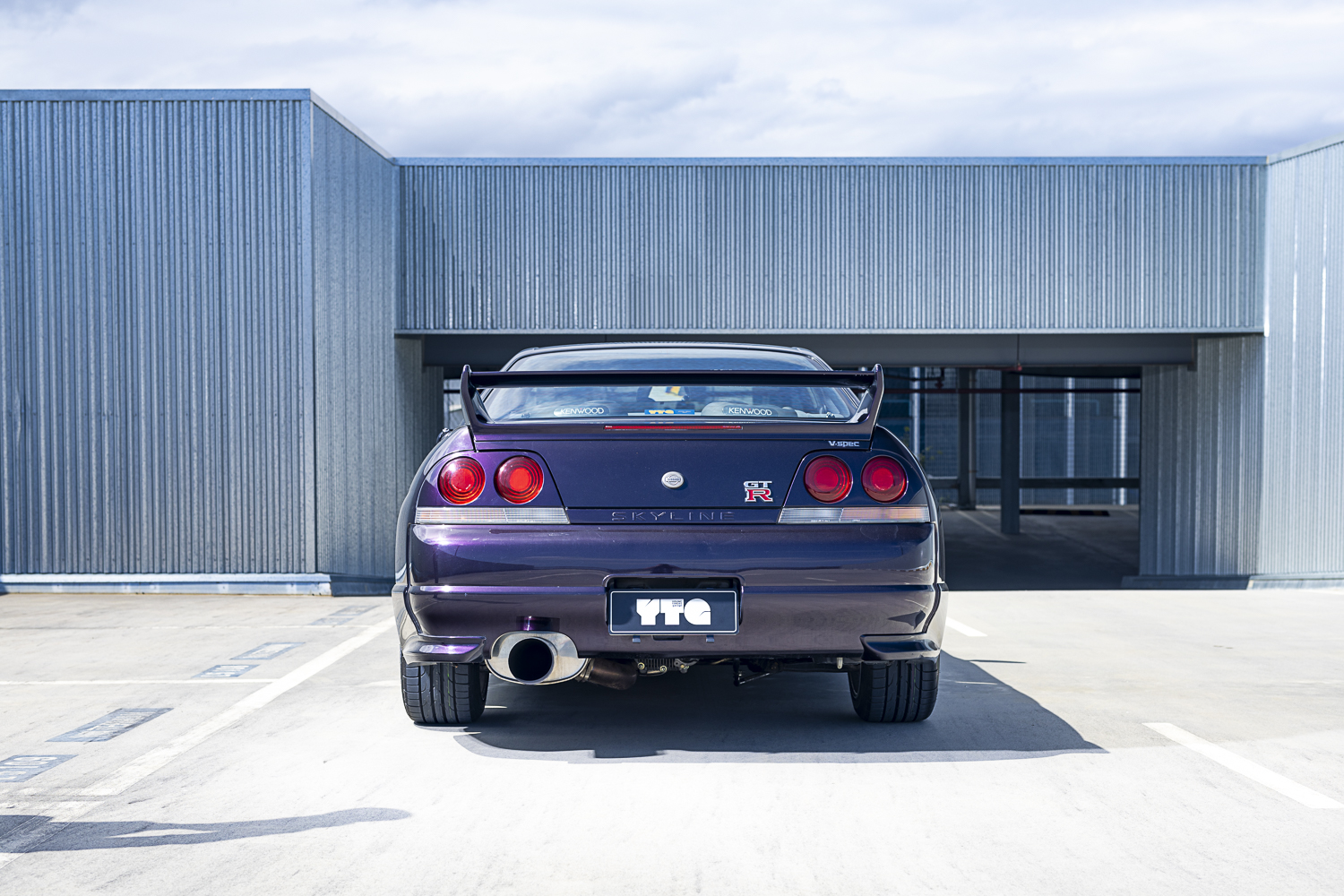
So there were no blank cheques for the R33’s development. Instead, it had to platform share in order to make a business case for itself. So it rode on a version of the Nissan Laurel’s underpinnings which, in turn, made it larger and heavier than the car it replaced, with Nissan claiming it had stuck to the 280PS (206kW) ‘gentlemen’s agreement’ for power output.
To the uninitiated, the R33 GT-R initially appeared a dud; an overweight wannabe that had none of its predecessor’s competition pedigree.
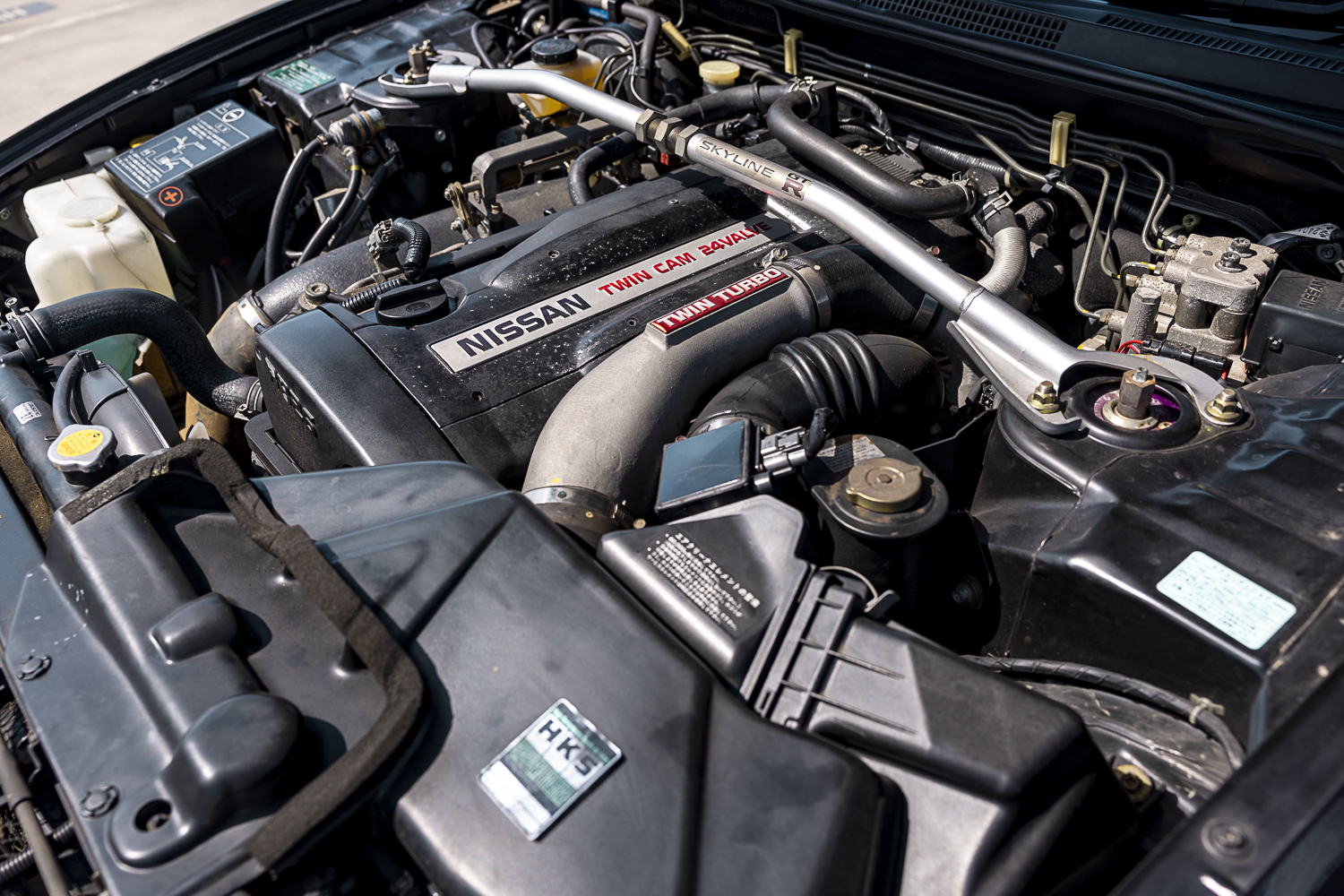
Then the first road tests began to spill. It was clear that this was anything but a dumbed-down R32. Our man in Japan, Peter Nunn, posted his first report in the March ’95 issue of Wheels. Nissan was already claiming that it could lap the ‘Ring 21 seconds faster than its predecessor. What’s more, it claimed the R33 could sprint through 400m in 13.5 seconds – a full 0.4sec clear of the R32. By today’s standards, that’s about line-ball with a front-drive Hyundai i30 N. Back then, it was junior supercar quick.
How do you do that with a 100kg-heavier car with no more power? Not for the first time, aspersions were cast as to the amount of power the RB26DETT straight-six was actually making. Indeed, independent testing found some showroom-spec examples making in excess of 240kW at the crank. There are clearly gentlemen and gentlemen. Of course Nissan claimed otherwise, pointing to the fact that the new GT-R was more aerodynamic. It pointed to a three percent increase in torque to 367Nm at 4400rpm, quicker spooling ceramic turbochargers and a smarter, grippier all-wheel-drive system.
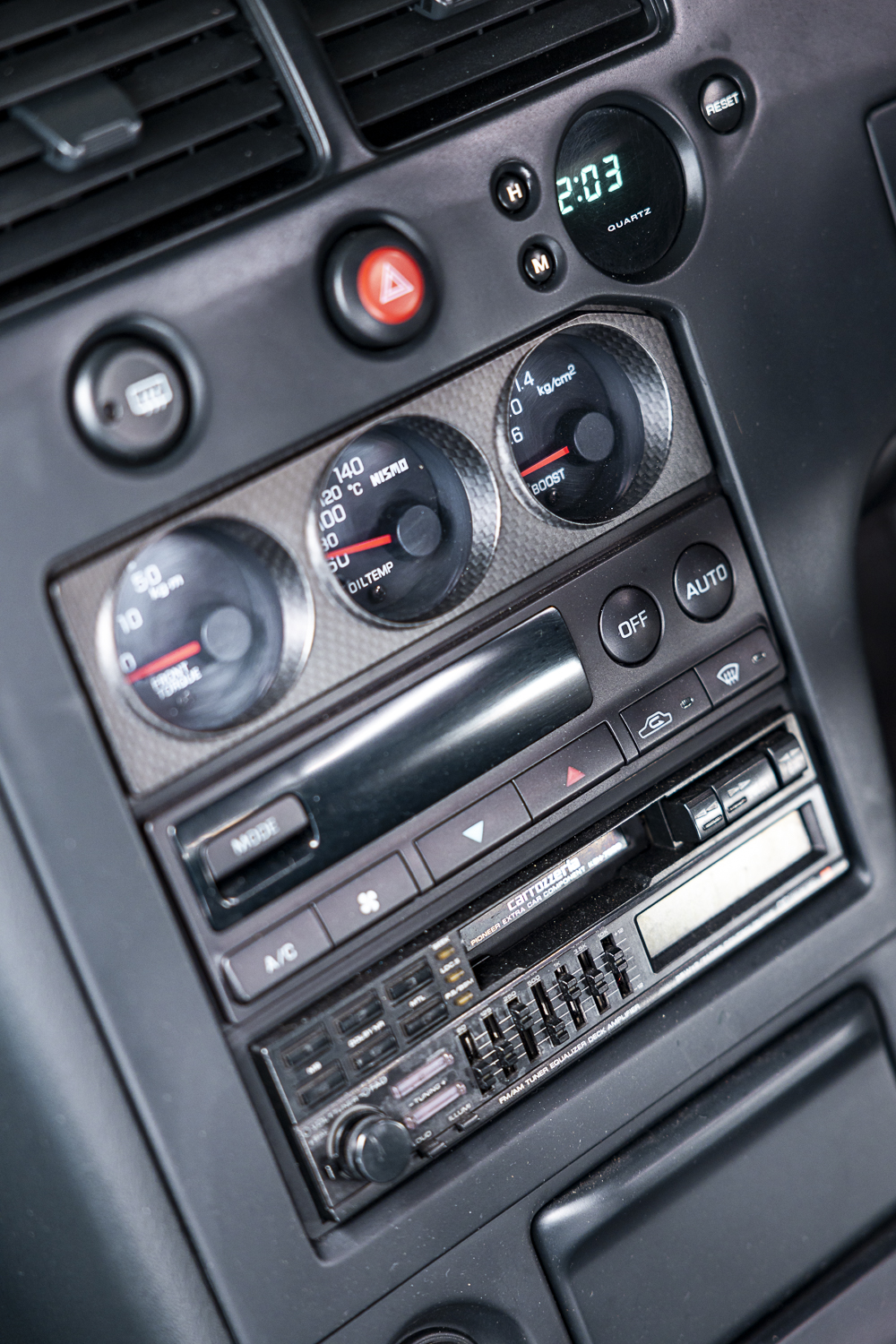
There were numerous other enhancements over the R32. Its body was notably more rigid due to beefier sills, body braces front and rear, and a reinforcing panel behind the rear seats.
The brakes scored an upgrade, too, now measuring 324mm up front and 300mm at the rear compared to 296mm and 297mm respectively on its predecessor. The R33’s standard wheel and tyre set was bigger, and while the Super HICAS four-wheel steering system was retained, the R33 featured a smarter electronic controller rather than being hydraulically actuated.
Japanese buyers got to choose between the standard GT-R and the V-spec version. The standard car got the ATTESA E-TS all-wheel drive system to shuffle drive between the two axles, which talks to the four-wheel steering’s computer, taking inputs from the three-dimensional G, wheel speed and steering angle sensors. It can then calculate yaw, and the processor adjusts the rear-wheel steering angle, enhancing stability.
The V-spec models got a refinement of this system, ATTESA E-TS PRO, which has the ability to integrate control of the driving forces across the rear axle independently. This features a computer-controlled viscous limited-slip differential (the A-LSD). V-spec models also received stiffer spring and damper rates, and a ride height drop of 10mm.
Tuners who valued the bombproof nature of the RB26 quickly discovered that the V-spec’s A-LSD was the weak point in the drivetrain. The fix involves sourcing the non V-spec diff housing and shafts, and then fitting an aftermarket mechanical diff – the Nismo GT-Pro 1.5 or a Quaife being favoured choices. The budget option is a helical diff from an S15 Silvia.
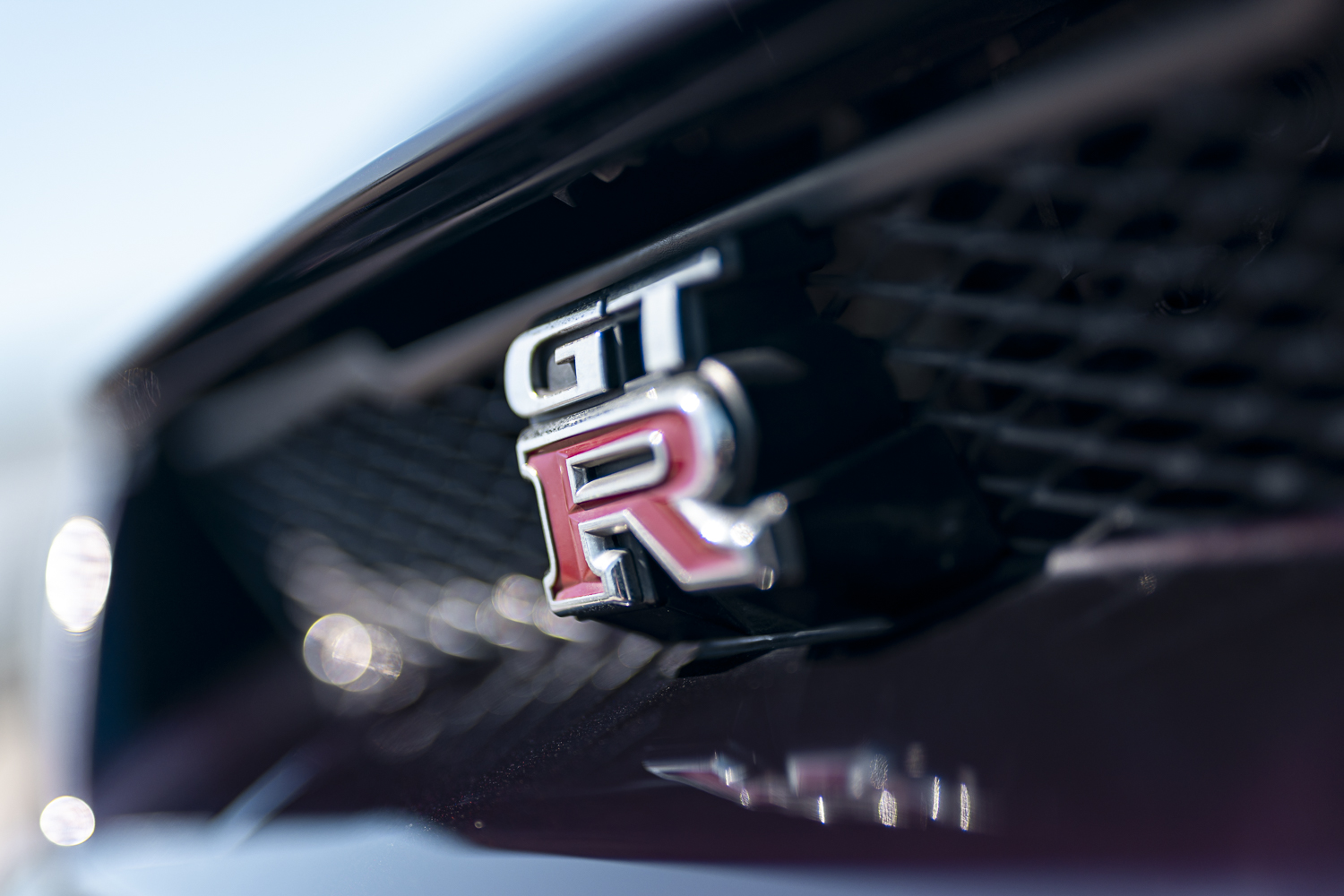
Beneath the fancy tech, the R33 Skyline GT-R is ostensibly a rear-wheel-drive car. If it can send 100 percent of torque to the rear wheels without drama, it will. If necessary, up to 50 percent of torque can go to the front wheels. The ATTESA processor is calibrated with identical base values for the front and rear wheels. This means that it makes the assumption that all wheels and tyres are identical: same size (245/45ZR17), same tyre type, same wear pattern. Staggering wheel size or doing anything but fitting four identical tyres tends to mean that its math doesn’t math any more. Not ideal.
Our first experience with the R33 GT-R on Aussie bitumen came with a June 1996 track test where we put the first privately imported V-Spec (finished in the same Midnight Purple colour scheme as the Young Timer Garage car here) up against the BMW E36 M3 Evo and an HSV GTS-R. Curiously, for a car that majored on tech, the Nissan sported a five-speed manual versus the six-speeders fitted to the German and Aussie brawlers.
The Nissan was comfortably the quickest against the stopwatch, recording a 13.8sec 0-400m time, beating the M3 by half a second and the HSV by a yawning 1.2 seconds, despite claiming the least power of the trio. Around Oran Park, it was also the most impressive. Over to Michael Stahl.
“With a crisp and firm turn-in (albeit after overcoming the rock-hard brakes and the arm-wrestling wheel), the GT-R just sorta skates out into a dead flat and predictable cornering attitude. Where one normally plays with the car’s cornering balance at about this point, the Skyline seems only to alter its cornering attitude by slipping around on a horizontal plane. It’s like an oversized indoor go-karting buzz,” he said.
“Your foot already to the floor, the tyres shrilling and subtly slipping, the GT-R holds its slight tail-out stance as it fires out of corners like a golf ball off the tee. It’s an eye-opening, bum-puckering performance. By comparison, GTS-R and M3 at the racetrack are merely great – for earthlings.”
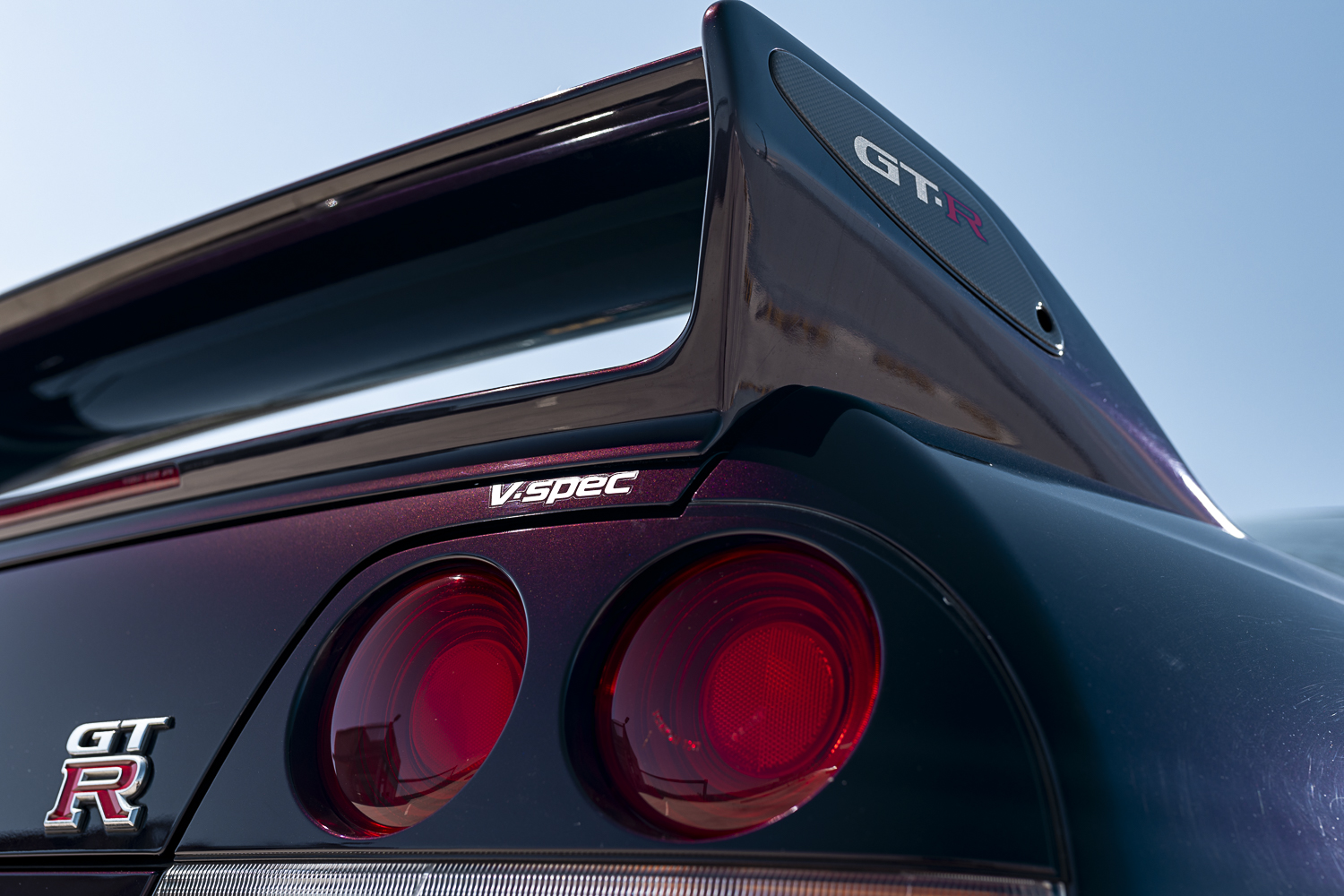
The test verdict went to the BMW, Stahly not being particularly enamoured of the Nissan’s road manners. “Many elements of the Skyline GT-R – its hollow, lagging bottom-end power, its belly-jiggling suspension and savagely tramlining steering, its hard, low seating and metal-on-metal brake feel leave it less pleasant than the others on the road,” he noted.
Many R33 GT-R variants followed, including the very collectable N1 factory lightweight (87 built) and the LM Limited model (188 cars built) which commemorated Nissan’s entry at Le Mans in 1996.
Official UK-spec R33 GT-R V-Specs are interesting, effectively being Series 3 cars (with the bigger front spoiler, revised oil coolers, plus single fog and reversing lights), and 20 of the 100 customers took up the option of the full Connolly leather interior.
The R33 GT-R was produced in three discrete series, with a build run of 16,688 across the almost four years from January ’95 to November ’98. Compare that to the 43,937 R32 GT-Rs built between August ’89 and November ’94 and you’ll appreciate that the R33 is significantly rarer.
Its values enjoyed a bump when the car became eligible to import to the US under the 25-year rule, and solid examples of the V-Spec here in Australia currently change hands typically in the region of $120,000.
In our market, the R33 GT-R has never quite stepped out of the huge shadow cast by its legendary forebear. Similarly, it doesn’t have the Gran Turismo cachet of its successor, the hugely expensive R34. That’s something of a shame because it’s a hugely capable, impressively practical and genuinely tough coupe that still stands up as a driver’s car today.
No, you’re not going to be blowing everything into the weeds like you would have been doing back in 1995, but that’s three decades of progress for you. Sally from accounts with her white-goods Tesla will do a number on you. But that’s not the point.
To appreciate the R33 GT-R is to think not of Bathurst, but of the Nordschleife, of Schoysman and Kurosawa manhandling the big Nissan around the 20.8km of the Green Hell, setting a mark that would live in the minds of motoring enthusiasts around the world for eternity. You may not get to drive flat out through the Foxhole, feeling your face sagging like a fighter jock in a centrifuge. But somebody did to prove this car’s abilities. The R33 isn’t the awkward middle child. It’s a bloody hero too.
Specifications
| Model | R33 Skyline GT-R V spec |
|---|---|
| Engine | 2568cc 6cyl, dohc, 24v, twin-turbo |
| Max Power | 206kW @ 6800rpm |
| Max Torque | 368Nm @ 4400rpm |
| Transmission | 5-speed manual |
| Weight | 1540kg |
| 0-100km/h | 5.4sec (tested) |
| Price | from $100,000 |
Heavy is the head that wears the crown. The Ford Everest saw off all comers to win 2023’s Wheels Car of the Year crown and has been rewarded with some truly impressive sales figures. When you’re at the top, everybody’s drawing a bead on you, and there will be some who felt that Ford’s win was somehow asterisked by the fact that the ancient Toyota Prado was on run-out, ahead of an all-new model appearing.
It’s time to find out whether they have a point, because the LandCruiser Prado has finally landed and we’ve put the biggest selling Everest model, the V6 Sport, up against the Prado GXL, the variant that Toyota reckons will account for just over half of all Australian registrations.
The Ford offers an instant and useful price advantage, carrying a $73,740 price tag while the Toyota is $79,990, ducking just under this year’s Luxury Car Tax threshold of $80,567. Both are seven-seaters and the Everest scores another on-paper advantage in offering a 184kW/600Nm V6 powerplant compared to the Prado’s 150kW/500Nm four-pot. Suddenly that weight of responsibility borne by the Ford looks to have been quickly and rather effortlessly handballed to Toyota.
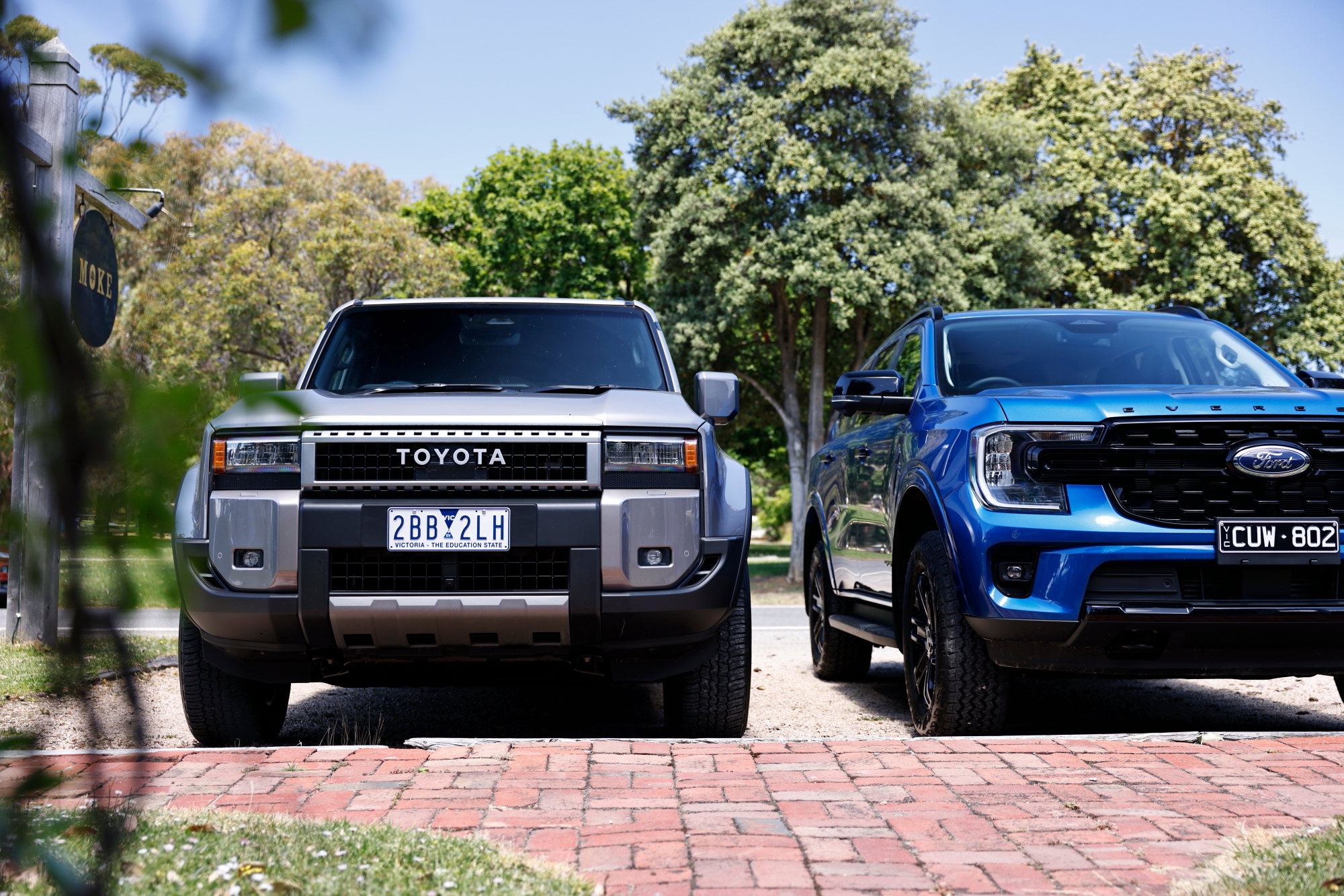
There’s little doubt that the Prado is turning more heads. As it stands, it’s still a relative novelty on our roads compared to the ubiquitous Everest, and people are endlessly curious about it, wanting to see inside, asking our opinion and giving theirs. For the most part the impression it creates is favourable. The somewhat brutalist styling is a hit, although some had asked when the retro-style round headlights that the American market gets will appear Down Under. Unfortunately, Toyota has no plans for that.
Given the pace that the order bank is filling, we’re going to get very used to the look of the Prado very soon. Toyota has instigated a rolling cap on waitlists of over 12 months, so if the queue blows out any longer than that, they won’t officially take an order from prospective customers.
There’s no great issue with Everest availability. Stock levels of the Thai-built Ford are good, with all but the range-topping Platinum versions readily available and a typical wait of three months for a Sport custom-spec order.

The GXL is the entry-level seven-seater in the Prado line-up. Beneath it is the five-seat GX base model and above it the seven-seat VX and Kakadu models, and the five-seat Altitude off-road specialist model. As well as the 50:50 split-fold third-row seating, the GXL adds standard roof rails, a powered tailgate, rear privacy glass, and silver front and rear guard trim. Inside, there’s synthetic leather seats rather than fabric upholstery, heated and ventilated front seats with eight-way powered driver’s seat, leather-trimmed steering wheel and shift knob, rear-seat air-conditioning panel and an auto-dimming rear view mirror. There’s also a front wireless charging pad and a pair of additional USB-C ports in
the third row.
The Everest range bifurcates quite neatly into the 2.0-litre four-cylinder models and the four-wheel drive V6s, of which this Sport is the entry level. It’s easy to see why it’s so popular as the 2.0-litre Trend 4WD costs a mere $6000 less, and for that, buyers are not only getting a significant engine upgrade but also a trim level that brings with it a distinct look and feel, as well as more gear.
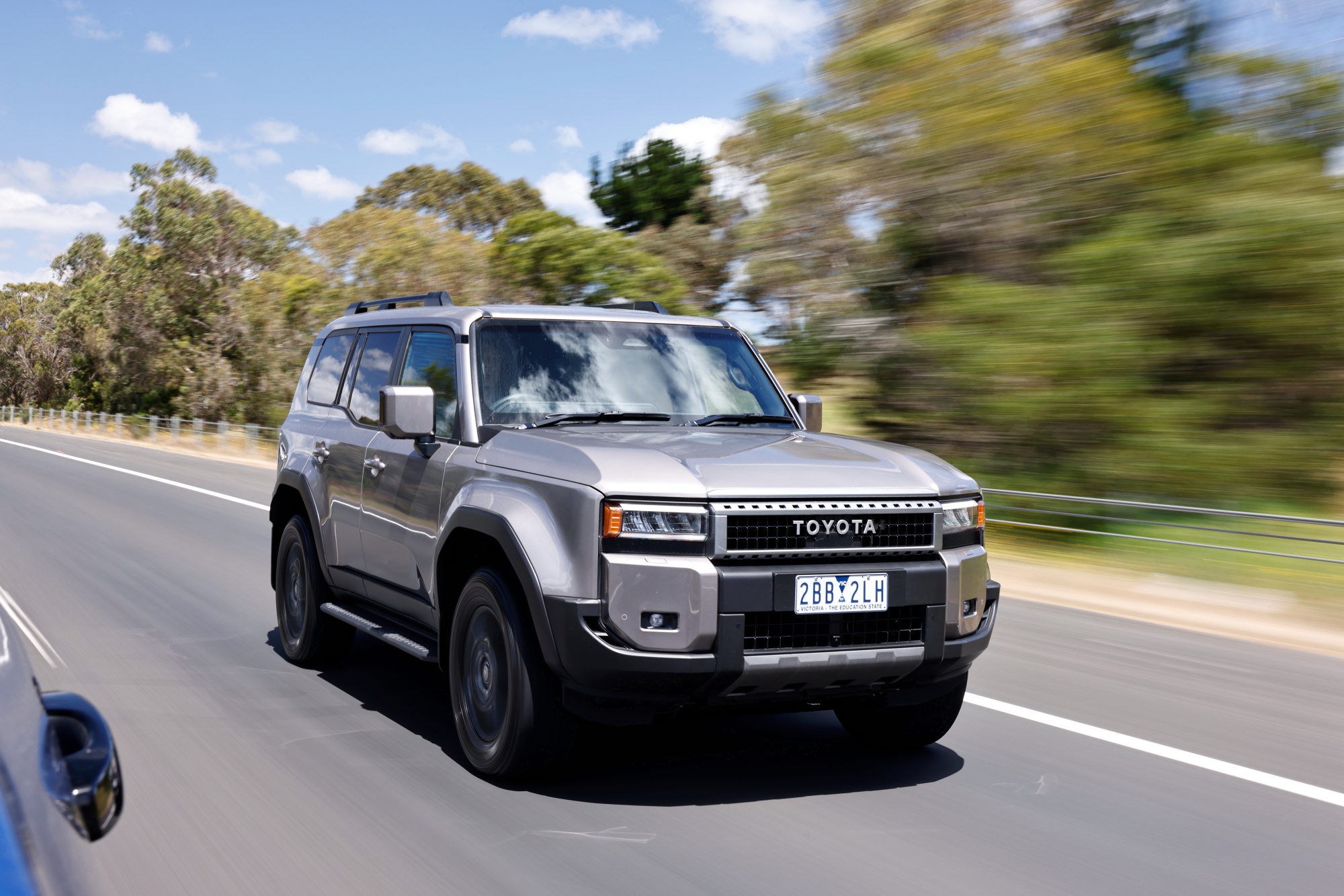
The black exterior theme extends to 20-inch black alloys (or 18s with A/T tyres), black exterior accents and black 3D bonnet lettering. The Sport also nets a 10-speaker sound system, leather-embossed seats, 10-way power driver seat with memory function, eight-way powered passenger seat, and heating and ventilation for both front seats.
Both SUVs feature standard wireless Apple CarPlay and Android Auto, with wireless charging pads to back up that capability. Both feature large touchscreen displays, with the Ford’s easier to navigate. That said, Ford’s SYNC4A system can occasionally hang and require a reboot in order to recognise a previously paired phone. By contrast, the Prado’s system seemed rock solid in picking up smartphone mirroring quickly and effectively.
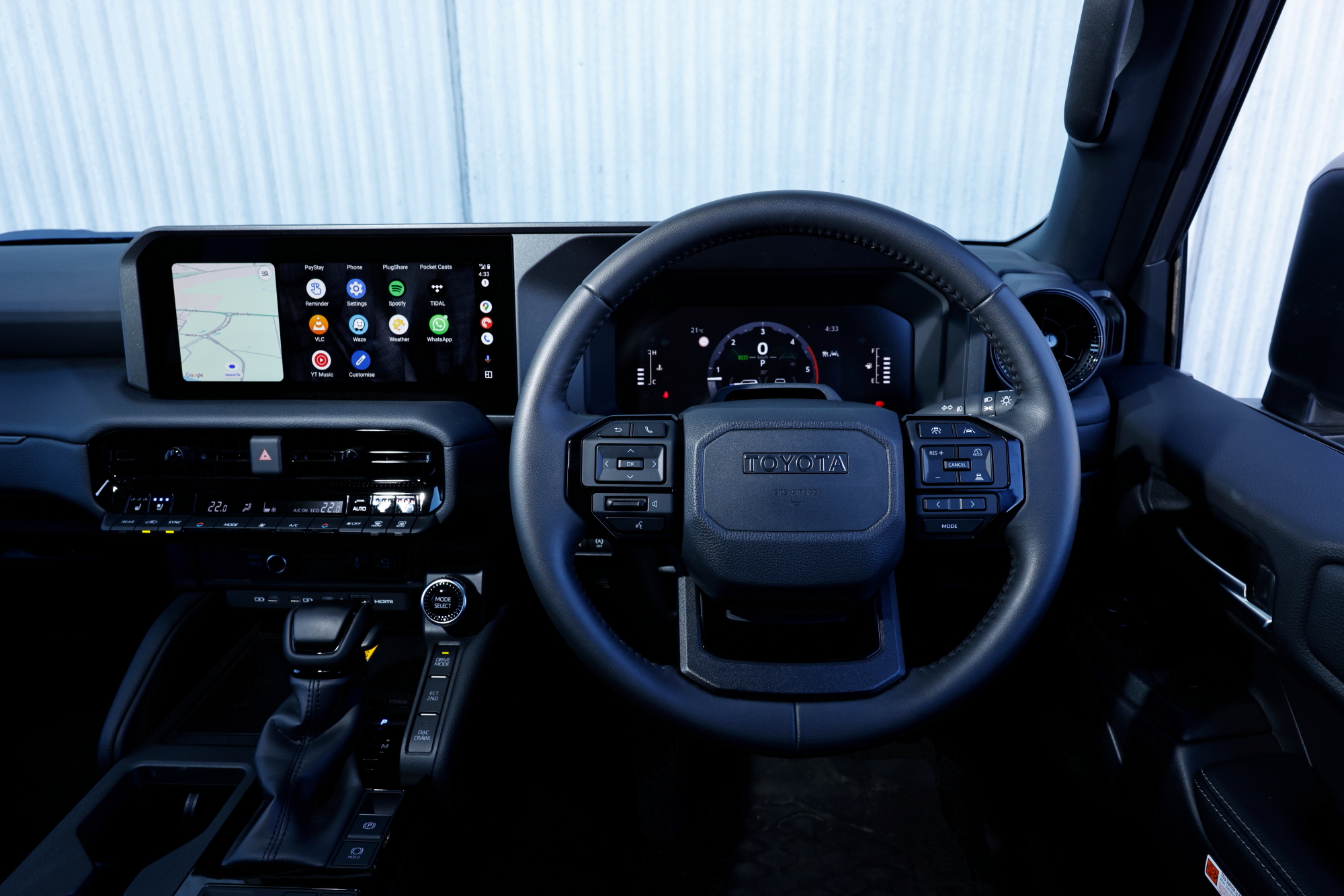
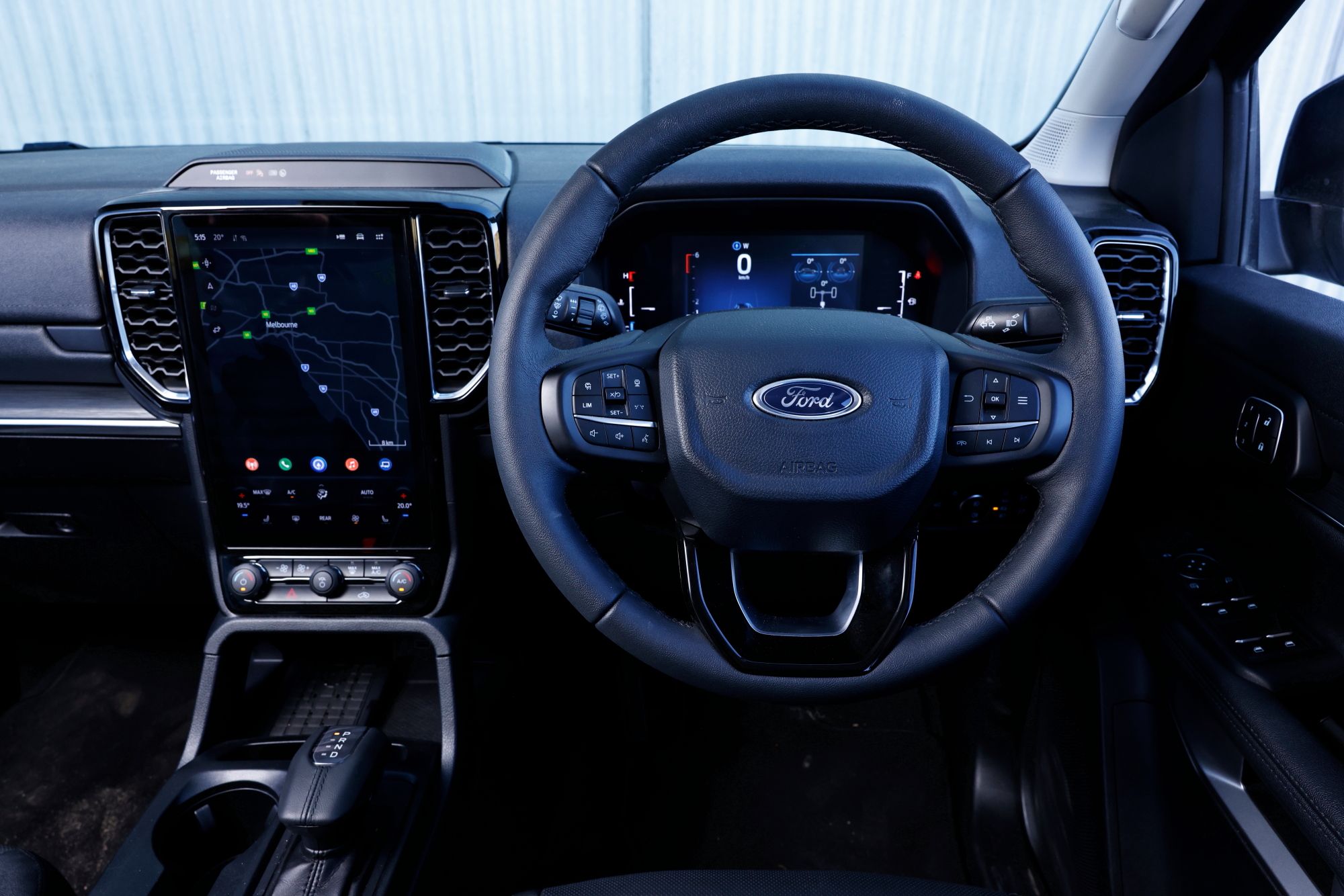
Both feel well provisioned for storage space in the front of the cabin, the Toyota featuring a larger and deeper central bin, the Everest countering with not one but two gloveboxes. The Toyota features an HDMI port and three USB slots up front, the Ford offers a choice between USB-A and USB-C. Both offer a decent driving position but, in contrast to their respective screen orientations, the Toyota’s ‘portrait’ mirrors don’t clear blind spots as effectively as the Ford’s ‘landscape’ oriented items.
Fire up the cars and the Toyota is initially more endearing. The front seats are more comfortable than the Ford’s firmish and slightly convex-feeling backrest, and the combination of low-effort steering and a softish suspension tune means that it’s a vehicle that would be easy to cover some serious kilometres in.
The engine is undoubtedly more sibilant. Despite the fitment of chain-driven harmonic balancer shafts to the 1GD unit, it’s always going to be tough making a combination of compression ignition and big 689cc cylinders feel silky. By way of comparison, the Ford’s V6 only has to manage 499cc of swept capacity per cylinder. The Prado’s lump does maintain its peak torque figure for longer than the Everest’s somewhat peakier performance.
A key part of the Toyota’s friendliness on road is the fitment of Dunlop Grandtrek AT30 tyres (265/65R18 all round). Although labelled an all-terrain tyre, they’re markedly less aggressively knobbly than the Everest’s Goodyear Wrangler Territory A/T rubber (255/65R18 front and rear). As a result, the Toyota turns in a little more crisply on the blacktop, and there’s less hum from the tyres on poor surfaces.
Pitch the Prado into a corner and that inherently soft suspension results in considerable body roll. It’s game, though, and well behaved even when pushed. As is the case with many fairly soft vehicles, it’s not so much the case of measuring over or understeer, more an issue of how much roll the vehicle is happy to accept. In the case of the Prado, it’s quite a lot.
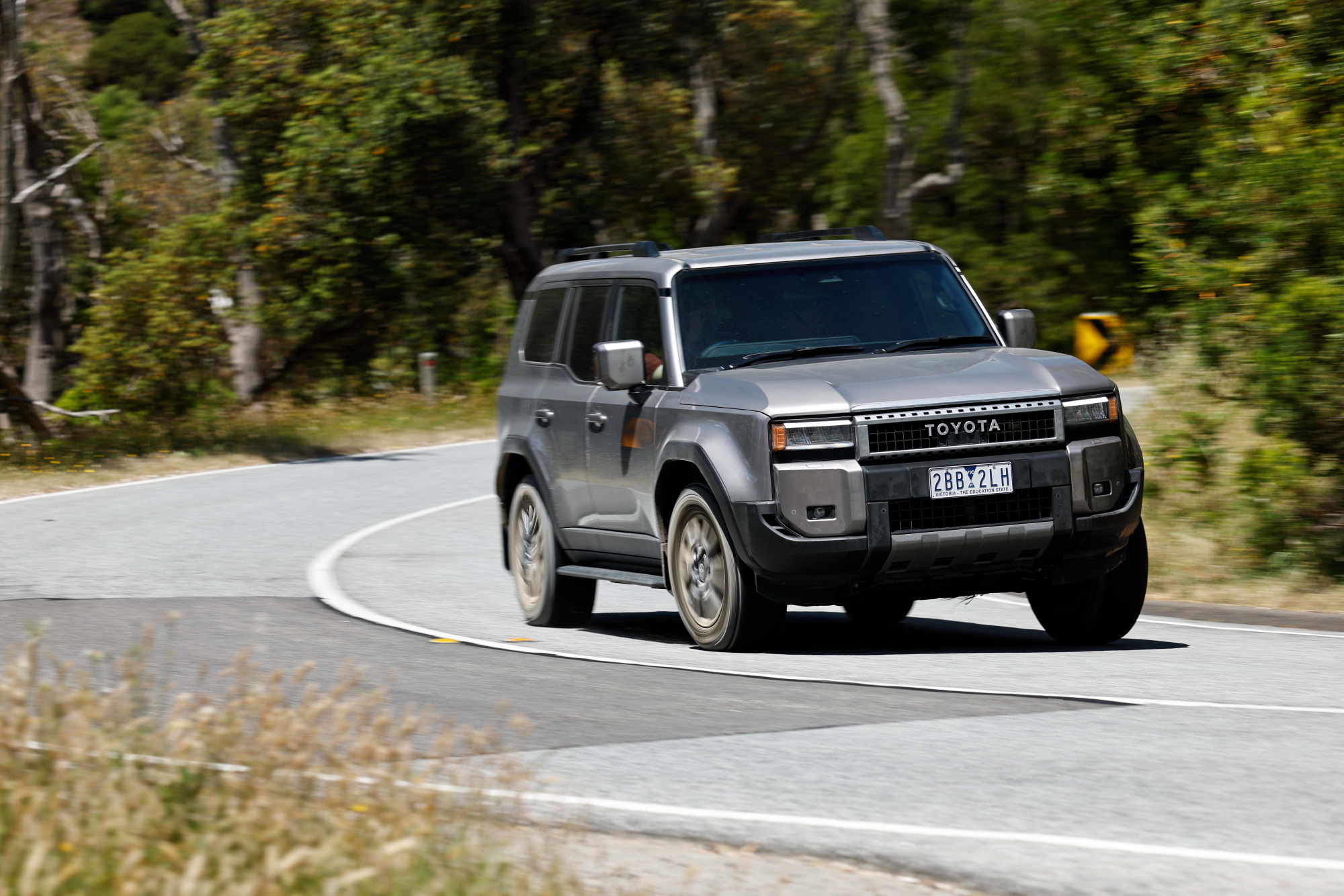
Follow the Toyota through a series of bends in the Everest and you’ll experience a far flatter and better-controlled body, albeit with rear dampers that are both a little too firm and a little too short in travel than might be ideal. The steering doesn’t feel quite as linear as that of the Toyota, but it’s quicker and delivers more feedback. For a big ’un on a warty tyre, the Ford is also surprisingly good fun to hustle along.
The engine advantage speaks for itself in a straight line, the Ford effortlessly gapping the Toyota as we pulled onto a freeway slip road. We recorded a 9.8-second 0-100km/h time for the Everest at COTY 2023, and the Prado is nearly a second off that mark, stopping the clocks at 10.7sec (according to Toyota), the modest torque fill of the 48V mild-hybrid system notwithstanding. The hybrid does help to tickle the Prado’s fuel figures into a net positive over the Everest, 8.5L/100km for the Ford playing 7.6L/100km for the Toyota. Both engines require a periodic AdBlue top up.
There’s little to choose between the two transmissions. While Ford initially had some issues with the earliest batches of 10-speed autos, a revised torque-converter design has fixed that. If anything, it’s the less hesitant of the two ’boxes now, especially around town speeds, and responds to kickdown requests quicker. Neither feature wheel-mounted shift paddles, but you can knock the Prado’s gear lever to one side and shift manually if required. The Everest features some less intuitive buttons on the shift knob to achieve the same end.
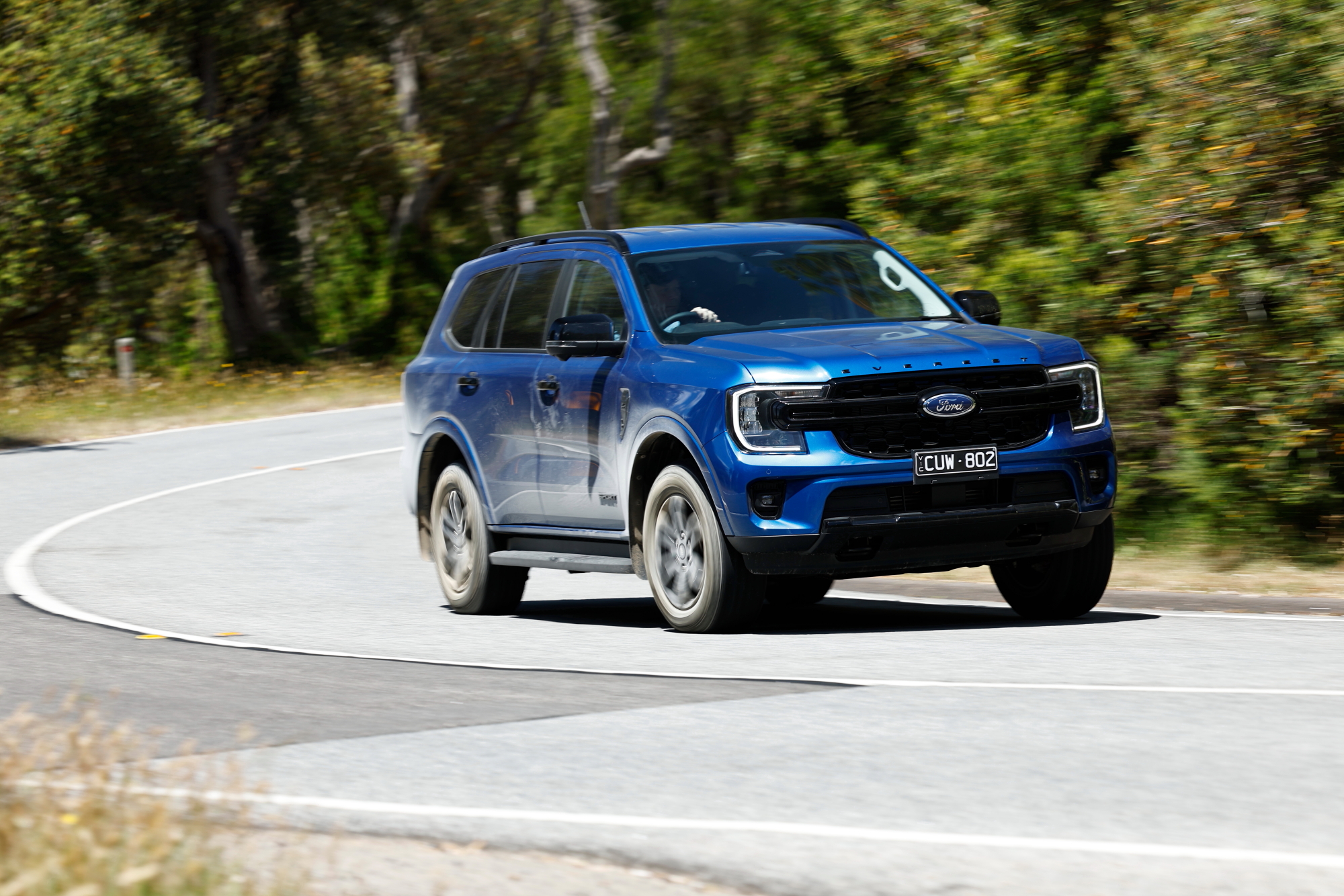
So the Prado scores wins for comfort and ride, the Everest countering with more involving handling and a superior drivetrain. Both can more than hold their own off road, as you might expect given their targeting. The Everest has 226mm of ground clearance, a wading depth of 800mm, and approach, departure and breakover angles of 30.2, 25 and 21.9 degrees respectively. It also features an electronic rear diff lock and Slippery, Mud/Ruts and Sand drive modes, as well as a dedicated off-road screen to show pitch and roll angles, steering angles and relevant camera images.
The Prado GXL’s limiting factor is its relatively urbane tyres, which have nothing like the tenacity of the Everest’s Goodyears in the soft stuff. Nevertheless, it features 219mm of ground clearance, a 700mm wading depth and approach, departure and breakover angles of 30.4, 23.5 and 21.1 degrees, so largely a notch behind the Everest. It also doesn’t come equipped with the trick demountable sway bars of the Altitude variant, so can’t boast that model’s ultimate articulation.
It does feature a rock crawl setting, a mode to start in 2nd gear, and a centre Torsen diff lock. Prado owners get a choice of either four-wheel drive high or the equivalent low range, whereas Everest can be run in rear drive – a smart four-wheel drive that diverts drive to the front treads when necessary – and the obligatory 4H and 4L settings. We found it hard to switch out the parking sensors when off-roading, resulting in many maddening bleeps, as it’s a function buried within the on-screen menus rather than operated by a physical button.
Somewhat unforgivably for two vehicles with an off-road remit, neither have a standard tyre-pressure monitoring system. In both cases you need to ascend the range to get this system as standard (VX in the case of the Prado, Platinum on Everest).
Both vehicles claim a 3500kg braked towing capability, but delve a little deeper into this one and key differences emerge. You might well have heard grumbles about the Prado’s payload, and the GXL has the highest payload of the range at 615kg. The sum total of towball down load, fuel, driver and passenger, roof racks, luggage, bullbars and such like need to be accommodated within that 615kg figure. Perhaps this helps explain why the Prado wasn’t offered as stock with a long range fuel tank option or space under the bonnet for a second battery. The Everest’s payload figure is quoted at 696kg.
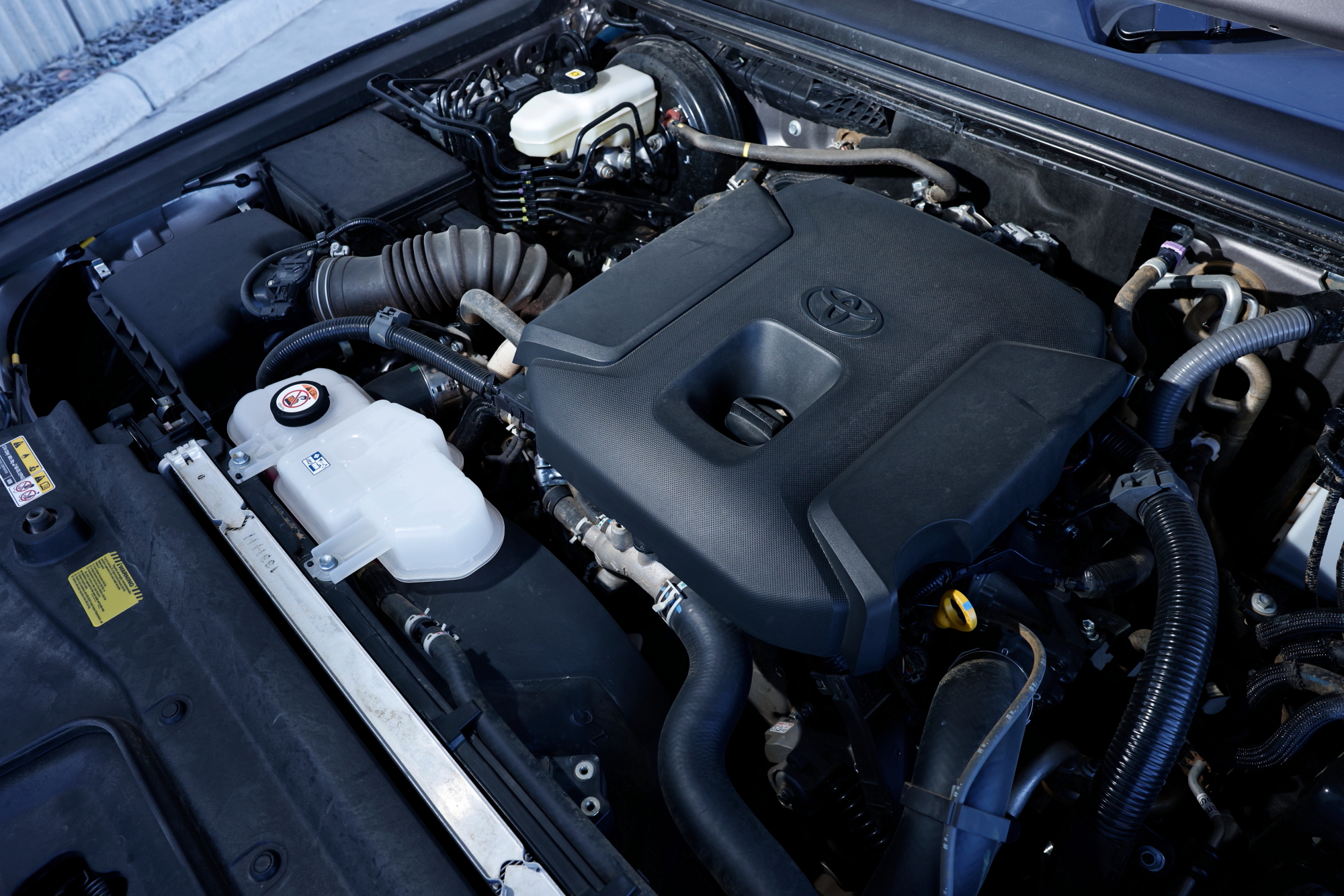
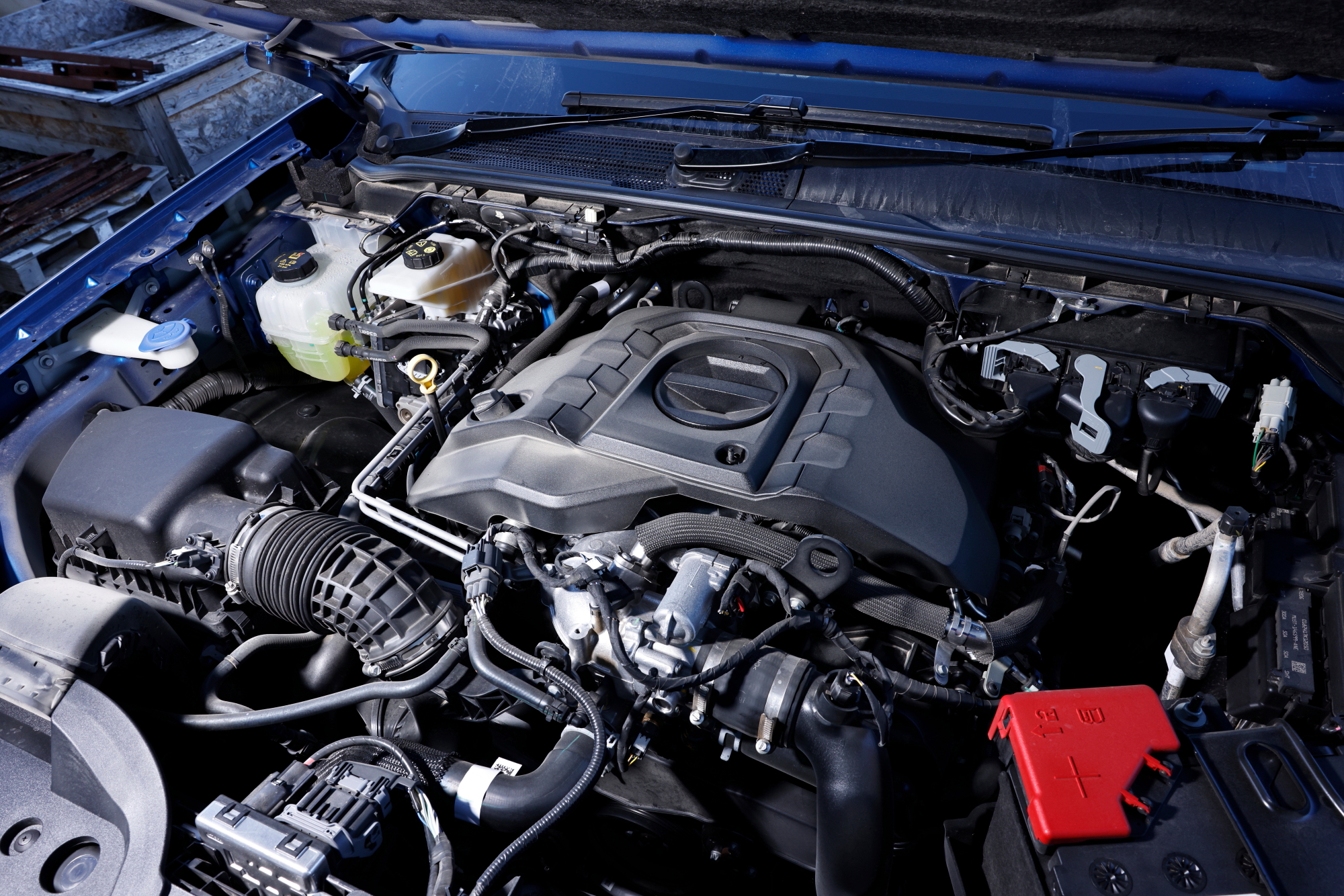
Luggage and packaging in general are an issue with this seven-seat Prado. Whereas the rearmost row of seats in the Everest folds flat to the floor to create a huge, low 128cm long runway on which to load gear, the Prado’s clunky rear seats sit atop a raised floor which houses the 48V battery pack. So not only is the Prado’s luggage bay shorter in that dimension than the Ford’s at 115cm, it’s also less tall from the folded seat backs to the ceiling (76cm v 82cm).
Fold the third row up and the Ford offers 56cm from the base of the seat back to the tailgate’s dust seal, whereas it’s a mere 40cm in the more compromised Toyota.
Why is this? After all, the Toyota’s rear end looks longer, and indeed is, than the Ford’s. Climb into the Prado’s second row and it’s apparent that because there’s no slide facility for that bench, Toyota have given this row a very decent amount of leg and toe space, and the third row is cramped as a result, with a very awkward egress past the tumbling seat. By contrast the Everest’s second bench has a tilt/slide facility which can afford a fairer amount of space for kids in the third row.
The drop-in storage box that Toyota fits to add some token practicality at the back doesn’t give a great impression of quality – it’s unlined and the lid has a 60kg weight limit.

With all three rows of seats in place, Toyota claims 182 litres of storage for the GXL in seven-seat mode, 906 litres with the 50:50 split-folding third row lowered and 1829 litres if the 60:40 split second row stowed. Ford, by contrast claims 259 litres with seven seats in place, 898 with the third-row folded flat and and 1823 litres.
We flatly refuse to believe that the Prado GXL offers more space than the Everest Sport in five-seat guise, despite the quoted figures, which I suspect may be to the ceiling rather than the more normally quoted figure to the height of the parcel shelf. Toyota Australia referred our query back to Japan and we’re still waiting for a response to this particular question.
The rear end of the car is such an issue that it makes it extremely difficult to recommend over the Everest as a practical seven-seat proposition. The sheer height of the floor means that lifting baby strollers or shopping into the Toyota is so much harder than it needs to be. It’s also proving to be a sticking point that some prospective customers can’t look past. That alone would be enough to hand the Everest the win in this comparison.
That it’s also more affordable, faster, more refined, more involving to drive, just as good off road, better for towing, just as well equipped and also records a five-star safety score makes the Ford the easy recommendation in this head to head. Ultimately, the 48V mild-hybrid system seems to have been this Prado’s Achilles heel. It has compromised the rear packaging while in the process adding weight to the vehicle which, in turn, has a deleterious effect on its payload figure.
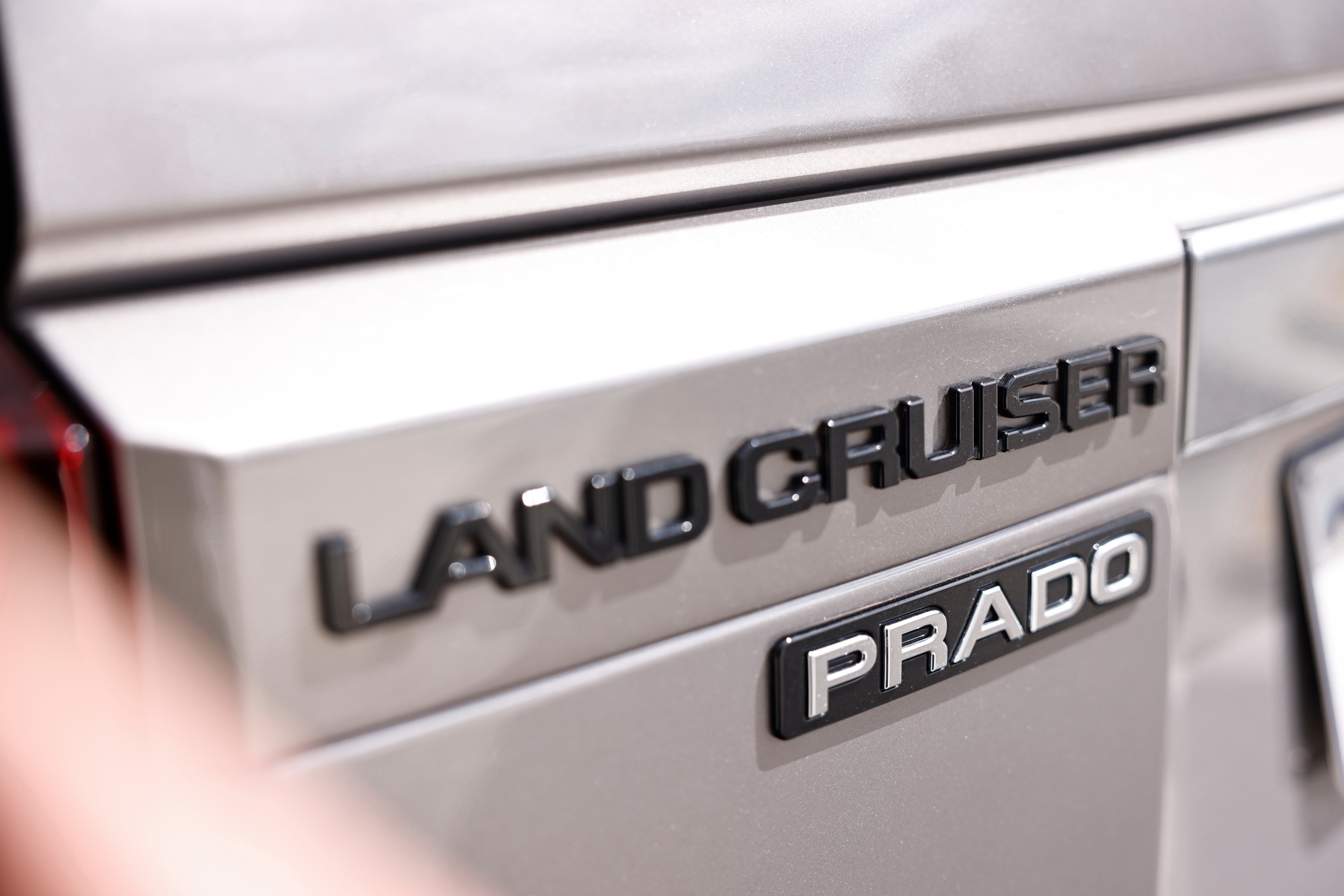
We crowned the Everest the COTY winner in 2023 because it was a car that manifestly understood what Aussies wanted from a rugged seven-seat SUV. Designed by Australians, in Australia, for Australians was the mantra that did a great deal to get it across the line last year. It still holds true today.
As for the Prado, it’s tough to make a case for it in this particular instance. Were you set on owning one for the longer haul and you didn’t particularly care about ultimate carrying or towing capacity, it’d doubtless be an appealing thing, but those inherent compromises become apparent every time you lift the tailgate.
Toyota doesn’t come to market and get squarely beaten by a three-year-old incumbent very often but in the shape of the all-conquering Everest, the latest LandCruiser Prado has run into something very special indeed.
In focus – Ford Everest
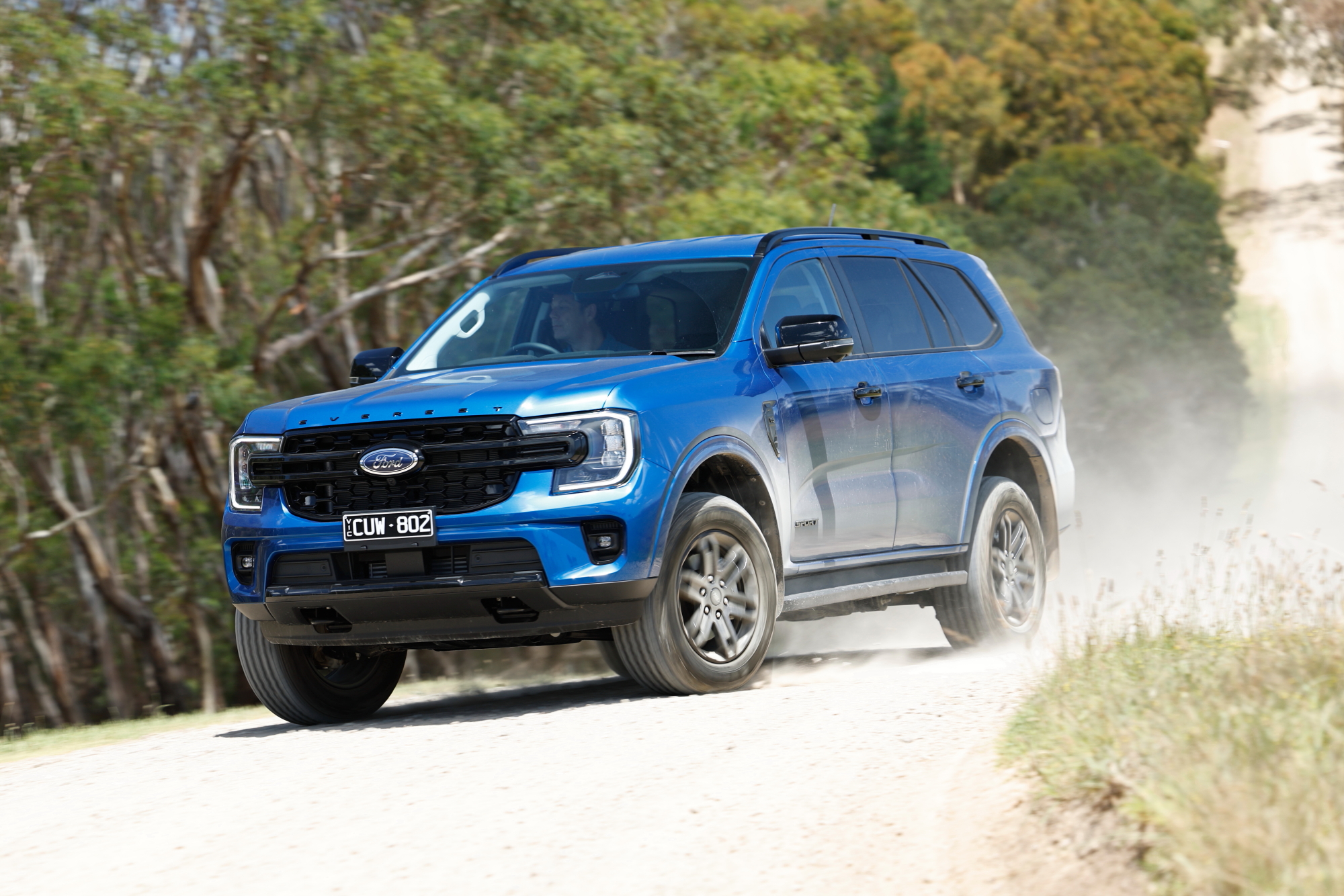
The Ford Everest’s cabin is something that’s well executed and certainly a step up from workmanlike, but it still carries the whiff of its Ranger counterpart about it. Every Everest comes as standard with an embedded modem known as FordPass Connect that allows you to use the FordPass app on your smartphone to remotely start the vehicle, receive health checks and so on.
Ford’s trailer-towing tech is deeply impressive. Input the dimensions of your trailer into the system and it’ll automatically adjust all the parameters of the lane departure system to cater for the increased length of vehicle and trailer.
The Everest’s 2900mm wheelbase is a useful 50mm longer than Prado and it shows in the cabin packaging.
| Model | Ford Everest Sport V6 4WD |
|---|---|
| Engine | 2993cc V6, dohc, 24v, turbo-diesel |
| Max power | 184kW @ 3250rpm |
| Max torque | 600Nm @ 1750-2250rpm |
| Transmission | 10-speed automatic |
| Weight | 2454kg |
| 0-100km/h | 9.8sec (tested) |
| Economy | 8.5L/100km (combined) |
| Price | $73,740 |
| On sale | Now |
In focus – Toyota Prado
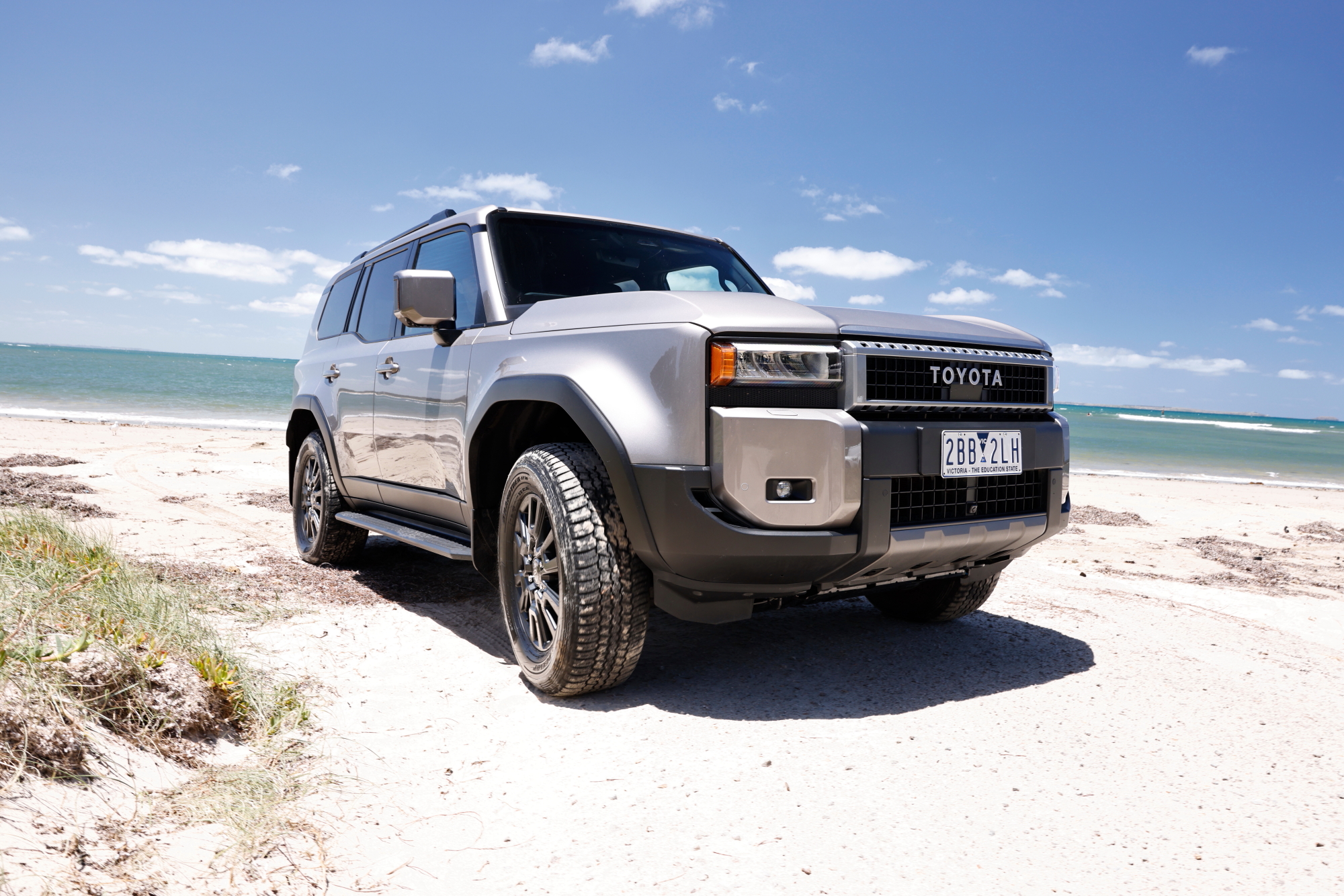
There’s little doubt that the Toyota’s dash looks and feels a notch above that of the Ford’s. Some real thought has clearly gone into the size, quality and positioning of the physical buttons, Toyota clearly listening to feedback from scores of Prado customers.
The low instrument panel, upright A-pillar, higher driver hip point and low beltline improves the feeling of airiness and helps position the vehicle off-road.
Toyota’s Multi Terrain System (MTS) is largely carried over from the LC300 and it works well. Dust sealing is also markedly better than the old Prado. Seating upholstery in this GXL model is made from Sumitex fabric largely composed from recycled PET plastic bottles.
| Model | Toyota LandCruiser Prado GXL |
|---|---|
| Engine | 2755cc 4cyl, dohc, 24v, turbo-diesel |
| Max power | 150kW @ 3000-4000rpm |
| Max torque | 500Nm @ 1600-2800rpm |
| Transmission | 8-speed automatic |
| Weight | 2535kg |
| 0-100km/h | 10.7sec (claimed) |
| Economy | 7.6L/100km (combined) |
| Price | $79,990 |
| On sale | Now |
This article originally appeared in the January 2025 issue of Wheels magazine.